
Category of Astronomical Heritage: tangible immovable
Kiev (Kyiv) Observatory, Ukraine

Format: IAU - Outstanding Astronomical Heritage
Description
Geographical position - InfoTheme: Astronomy from the Renaissance to the mid-twentieth century
Entity: 170
Subentity: 1
Version: 7
Status: PUB
Date: 2022-03-09 03:23:08
Author(s): Gudrun Wolfschmidt
Kyiv (Kyjiw, German: Kiew, English: Kiev, Russian: Kijew) Astronomical Observatory of National Taras Shevchenko University of Kyiv, Observatorna St. 3, Kyiv, Ukraine -- subordinated to the Ministry of Education and Science of Ukraine
2. New observatory Golosiiv (1944): Main Astronomical Observatory of the National Academy of Sciences of Ukraine (MAO NAS), Holosiivska (Golosiiv) forest, Akademika Zabolotnoho St. 27, 03680 Kyiv-Golosseevo, Ukraine (IAU code 083)
3. Astrophysical branch observatory on Mt. Terskol (3100m), Elbrus in Caucasus Mountains (1970/74)
Location - InfoTheme: Astronomy from the Renaissance to the mid-twentieth century
Entity: 170
Subentity: 1
Version: 5
Status: PUB
Date: 2022-03-09 03:23:58
Author(s): Gudrun Wolfschmidt
Latitude 50°27’10.6’’ N, Longitude 30°30’8.3’’ E, Altitude 184m above mean sea level.
New observatory Golosiiv: Latitude 50°21’47’’ N, Longitude 30°29’45’’ E, Altitude 188m above mean sea level.
IAU observatory code - InfoTheme: Astronomy from the Renaissance to the mid-twentieth century
Entity: 170
Subentity: 1
Version: 1
Status: PUB
Date: 2021-03-13 03:55:49
Author(s): Gudrun Wolfschmidt
085
Description of (scientific/cultural/natural) heritage - InfoTheme: Astronomy from the Renaissance to the mid-twentieth century
Entity: 170
Subentity: 1
Version: 5
Status: PUB
Date: 2022-03-09 03:20:08
Author(s): Gudrun Wolfschmidt

Fig. 1. Astronomical Observatory of the National University of Kyiv (1845) (© Astronomical Observatory of Kyiv University)
Kyiv (Kiev, Kiew) Observatory, located on the Kyiv Observatory Hill, is the oldest observatory in Ukraine and was constructed in 1840 to 1845, later (1860 to 1890) partially rebuild in the simplified style of Classicism. lt has the tower of octahedral shape.
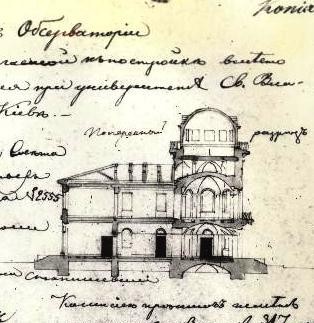
Fig. 2. Plan for the Astronomical Observatory of the National University of Kyiv (1845) (© Astronomical Observatory of Kyiv University)
"The main building - an architectural monument of national importance - has been specially designed and built by renowned architect Vikenty Beretta" (Vdovenko & Kazantseva, 2008).
"The four forge-iron columns with the relief omament, a hand rail of stairs made of cast iron, a tiled stove with stucco moulding are preserved in the central hall." (Pinigin et al., 2016).
The building is orientated in the plane of the meridian. On the West side, there is a meridian room with an exit to the open terrace for using portable instruments. The telescopes have strong fundaments and the dome (1860) is rotatable. The instruments and equipment were either imported from Europe or from St. Petersburg.
Later additional buildings - like laboratories and many pavilions with sliding roofs - were installed in 1946--1960 (meridian circle pavilion, astrograph pavilion, horizontal solar telescope pavilion, three metal pavilions, three brick pavilions). 14 star position catalogues with a high accuracy were compiled.
Outstanding personalities of astronomers worked in Kiev. Until the 1930s, the staff consisted of only two to four employees. The professors of astronomy and the observing astronomer were often educated in Europe. The first director of the observatory, Vasiliy Fedorovich Fedorov (1802--1855) worked first in Dorpat Observatory, 1825 to 1834, active with surveying, and he got in 1838 the call as first Kiev professor of astronomy. Fedorow observed the Total Solar Eclipse in 1842 in Tschernigow.
Other famous astronomers: Robert Fogel, Abdrii Shydlovsky, Mytrofan Khandrykov, Sergei Vsekhsviatsky, and Oleksander Bohorodsky.
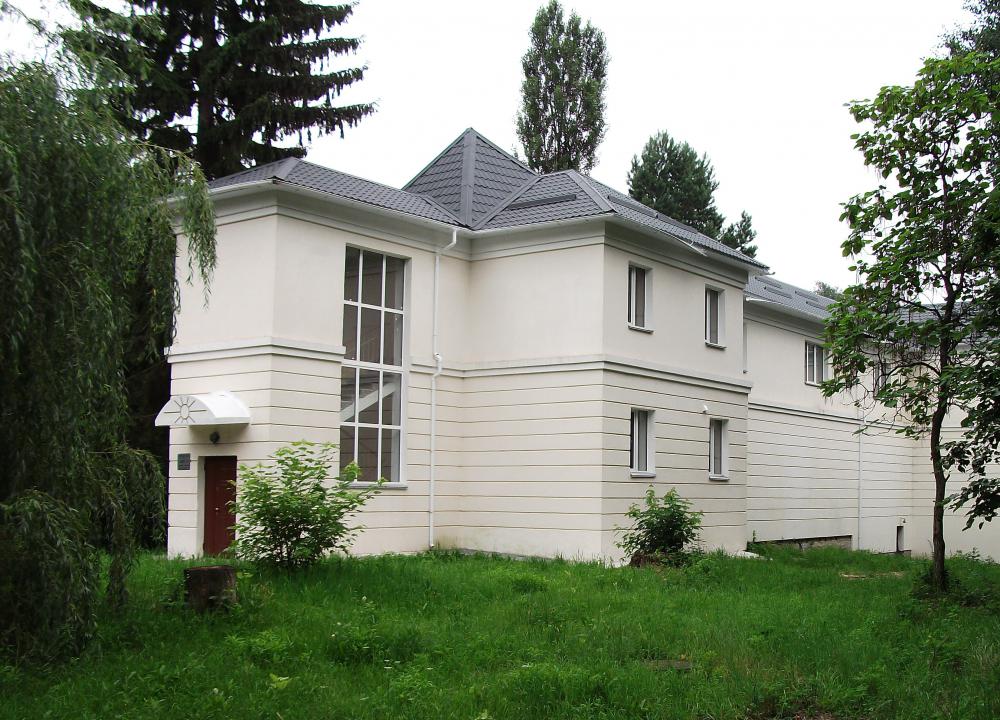
Fig. 3a. ACU-5 Horizontal Solar Telescope (Wikipedia, CC3, Amakuha)
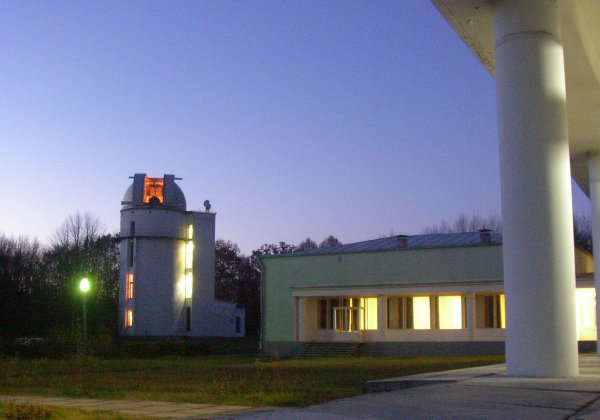
Fig. 3b. Double Astrograph, Toepfer (Kiev, id58)
New observatory in the Kiev-Holosiivska (Golosiiv) and on Mt. Terskol (1970/74)
The new Kyiv Observatory, 12 km from Kyiv center in Holosiivska, was founded in 1944 by Alexander Jakowlewitsch Orlow (1880--1954), director from 1944 to 1948 and 1951 to 1952.
An astrophysical branch observatory on Mt. Terskol (3100m), Elbrus in Caucasus Mountains was built in 1970/74.
Research topics from the first observatory to the modern observatory of Kiev: astrometry (stellar catalogues), solar physics and astrophysics, optical and radio observations of meteors; investigations of the Moon, comets and asteroids; the relativistic astrophysics; optical observations of the Earth’s satellites.
History - InfoTheme: Astronomy from the Renaissance to the mid-twentieth century
Entity: 170
Subentity: 1
Version: 16
Status: PUB
Date: 2022-03-15 17:29:34
Author(s): Gudrun Wolfschmidt
Alexander Jakowlewitsch [Aleksandr Yakovlevich] Orlow (1880--1954) was the first director of the new observatory in the Kiev-Holosiivska forest from 1944 to 1948 and 1951 to 1952.
The high-altitude astrophysical observation station on Mt. Terskol, Caucasus, was built in 1970, when Evgen Pavlovich Fedorov (1909--1986) was director.

Fig. 4a. Alexander Jakowlewitsch Orlow (1880--1954), (Wikipedia)
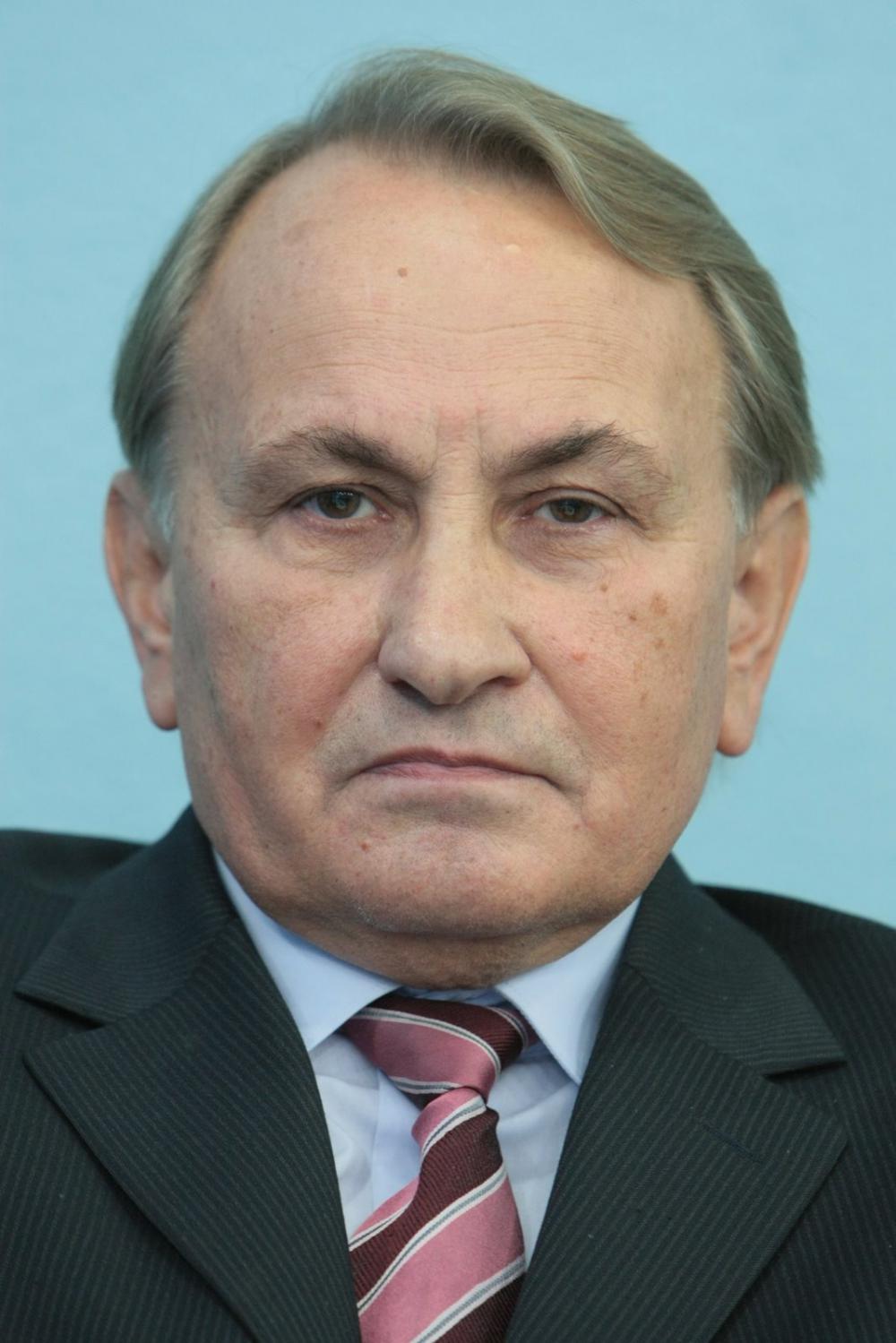
Fig. 4b. Yaroslav Stepanovych Yatskiv (*1940), director since 1975 (Wikipedia, CC3, uk_soborna)
Directors of Kiev-Holosiivska (Golosiiv) Observatory
- 1944 to 1948 Alexandr Yakovlevich Orlov (1880--1954),
Academician of the Academy of Sciences of the USSR - 1948 to 1951 Volodymyr Platonovich Tsesevich (1907--1983),
Corresponding Member of the Academy of Sciences of the Ukrainian SSR - 1951 to 1952 Alexandr Yakovlevich Orlov (1880--1954)
- 1952 to 1959 Avenir Oleksandrovych Yakovkin (1887--1974),
Corresponding Member of the Academy of Sciences of the USSR - 1959 to 1973 Evgen Pavlovich Fedorov (1909--1986),
Academician of the UkSSR Academy of Sciences - 1973 to 1975 Ivan Kirillovych Koval (....),
Doctor of Physical and Mathematical Sciences - Since 1975 Yaroslav Stepanovych Yatskiv (1940--....),
Academician of the National Academy of Sciences of Ukraine
Well-known astronomers
- Gavrilov, Igor Vladimirovich
- Gurtovenko, Ernest Andreevich
- Kolchynsky, Ilya Hryhorovych
- Konoplyova, Valentina Petrovna
- King, Alexei Konstantinovich
- Morozhenko, Nina Nikolaevna
- Onegina, Augusta Borysivna
- Orlov, Mikhail Yakovlevich
- Harin, Arkady Sergeevich
- Shulman, Leonid Markovich
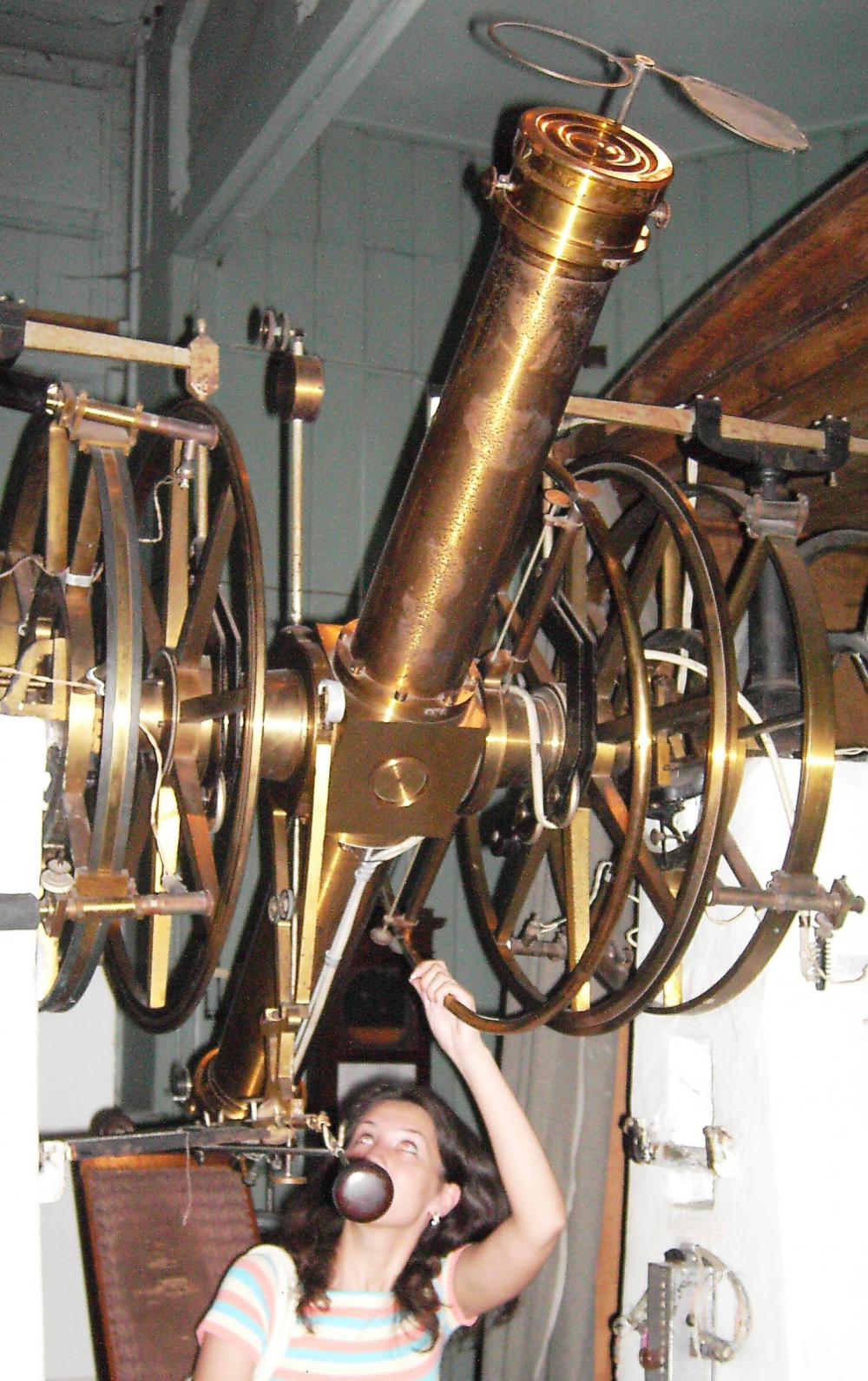
Fig. 5a. Meridian Circle (1870), (Wikipedia, CC3, Amakuha)
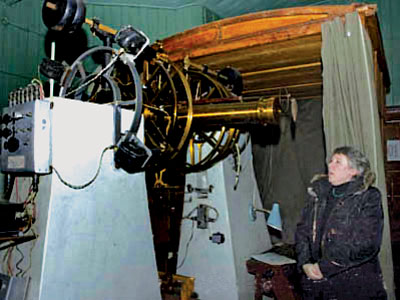
Fig. 5b. Meridian Circle (1870), (Kiev, 836-11)
Instruments of the first Kiev Observatory (*1845) until 1944
- Transit Instrument, Ertel of Munich (1838)
- Vertical Circle (D=19cm, f=25cm), Wanschaff of Berlin
- Meridian Circle (D=12.2cm, f=148cm), Repsold (1870), used for observations until 1996.
- Double Refractor Astrograph (D=20cm, 24cm, f=450cm), Repsold of Hamburg and Merz of Munich (1895) in the dome (1860)
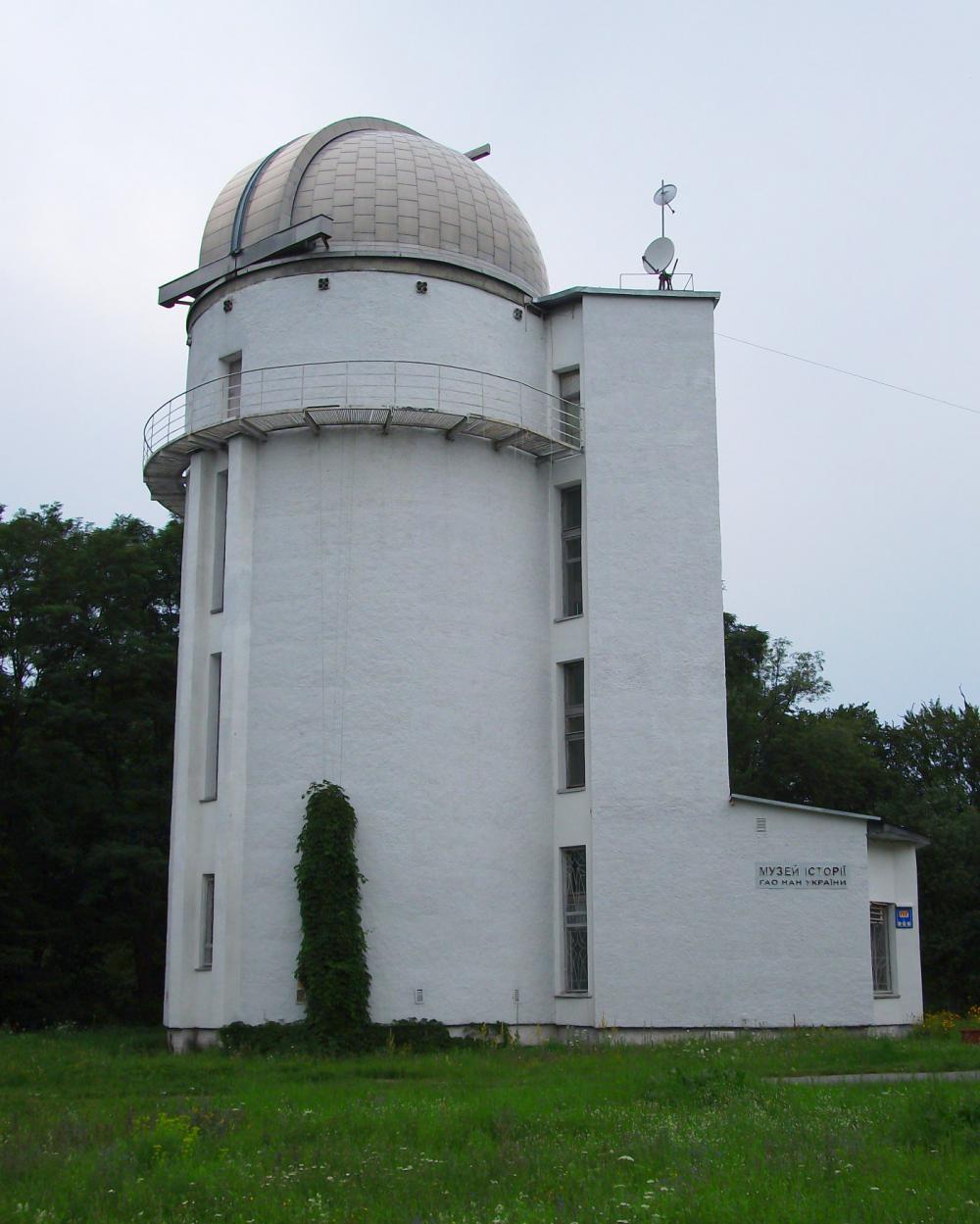
Fig. 6a. Double long-focus Astrograph (D=40cm, f=550cm), Töpfer of Potsdam (1946) (Wikipedia, CC3, Amakuha)
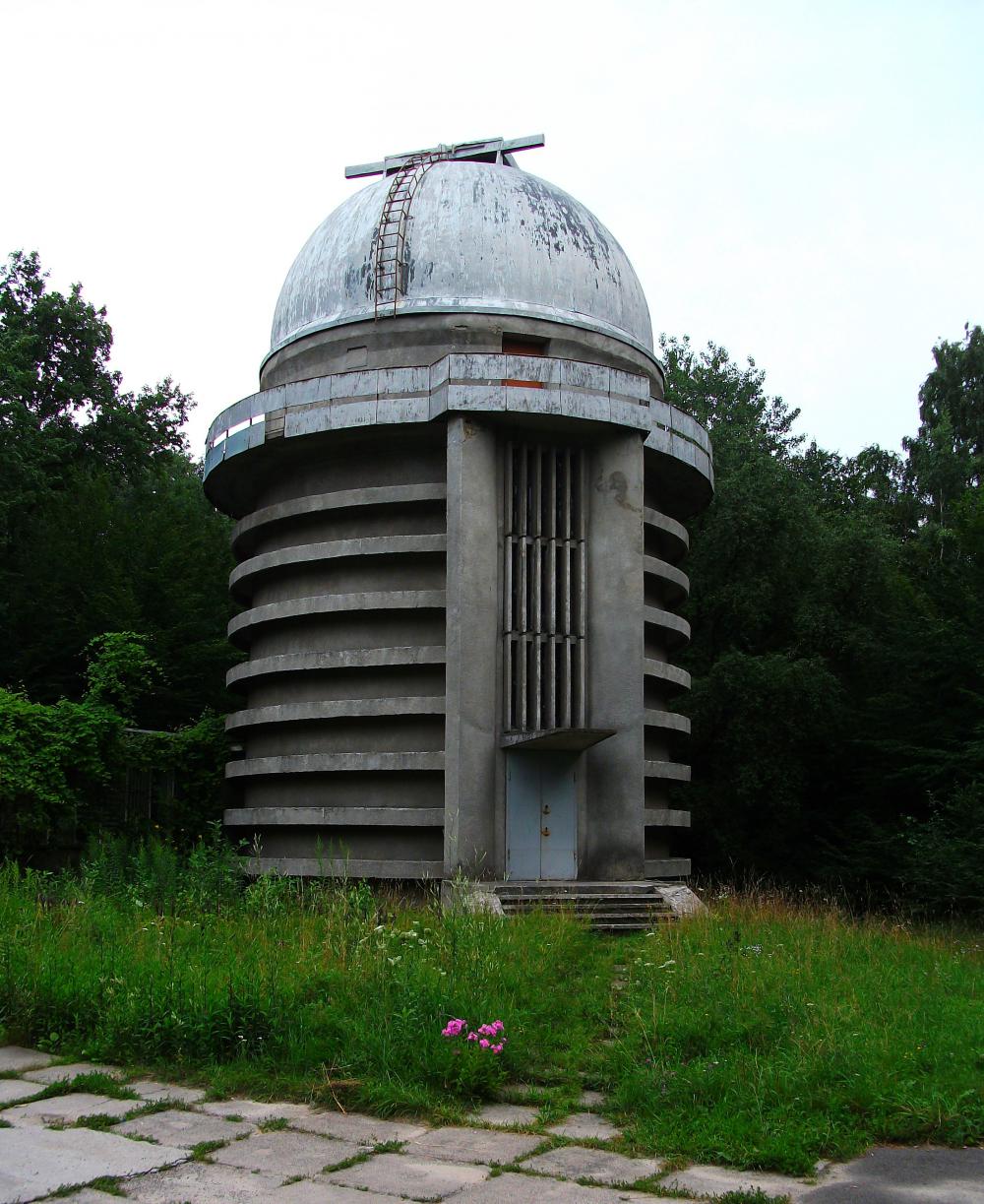
Fig. 6b. Double wide-angle short-focus Astrograph, VEB Zeiss of Jena (1975), (Wikipedia, CC3, Amakuha)
Instruments of the Holossijiw (Golosiiv) Observatory (1944)
- Double long-focus Astrograph (D=40cm, f=550cm), Töpfer of Potsdam, optics: Steinheil of Munich (1946), used for studying stellar proper motions, structure of the Galaxy, positions of the Solar System bodies, and Moon study. A new dome for the double long-focus astrograph was completed in 1991.
- AZT-2, 70-cm-Reflecting Telescope (1959) -- the first instrument for astrophysical purposes, used for photometric, spectral, and polarimetric observations of the Solar System bodies and stars. In 2008, a special correction system for tracking of the unstable geostationary satellite, comets, and asteroids was added.
- Small Solar Telescope with a spectrograph
- ACU-5 Horizontal Solar Telescope
- Photospheric-chromospheric Telescope
- Meteor Cameras
- Laboratory instruments: microphotometer, blink comparator, askorecord, calculator, arithmometer, ...
- Double wide-angle short-focus Astrograph (D=40cm, f=200cm), VEB Zeiss of Jena (1975), used for the observation of planets, asteroids, and comets, and for compiling different catalogues like the Northern Sky Survey (FON).
- Laser-TPL-1m-telescope, Station of laser observations of artificial Earth satellites, part of the worldwide network of stations of the International Earth Rotation Service.
- KIT (Kyiv Internet Telescope)
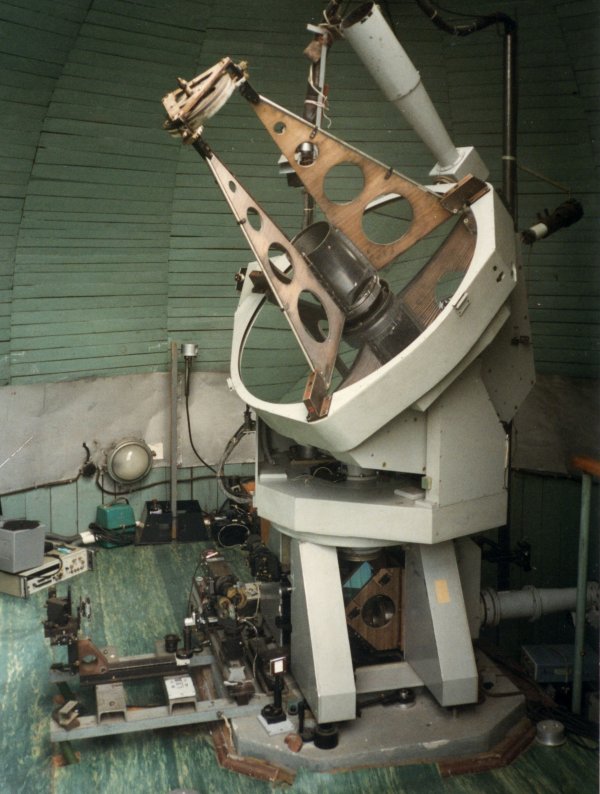
Fig. 6c. Laser-TPL-1m-telescope (Kiev, id60)
Instruments of the high-altitude astrophysical observation station on Mt. Terskol (1970/74)
- 60-cm-Telescope
- 2-m-Reflector -- Ritchey-Chrétien-Coudé (RCC) telescope (1995) in a 20-m-dome
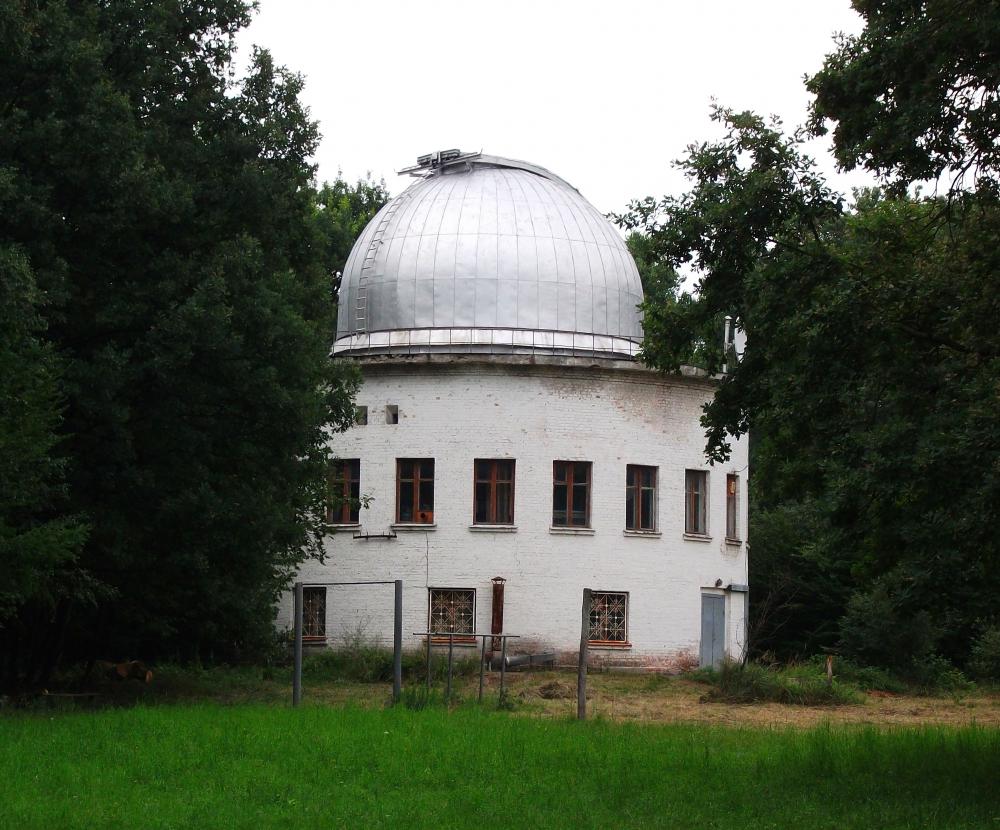
Fig. 7a. AZT-2, 70-cm-Reflecting Telescope (1959) (Wikipedia, CC3, Amakuha)
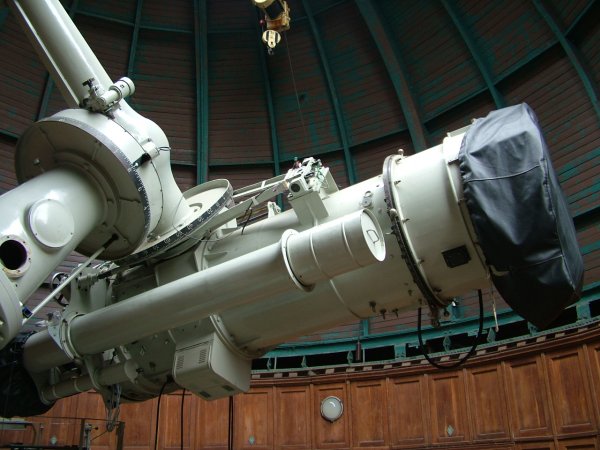
Fig. 7b. AZT-2, 70-cm-Reflecting Telescope (1959) (© Astronomical Observatory Main Astronomical Observatory of the National Academy of Sciences of Ukraine)
"The telescopes and facilities of the Terskol Observatory, situated 3100m above the sea level in the Northern Caucasus, are presented briefly. The main instrument is a 2-m RCC telescope, equipped with a UBVRI CCD-based photometric complex, spectrograph and Echelle spectrometer. Two small telescopes are in use, too: a 60-cm photometric telescope and a 65-cm solar telescope." (Sergeev & Tarady, 2007).
State of preservation - InfoTheme: Astronomy from the Renaissance to the mid-twentieth century
Entity: 170
Subentity: 1
Version: 6
Status: PUB
Date: 2022-03-15 17:31:47
Author(s): Gudrun Wolfschmidt
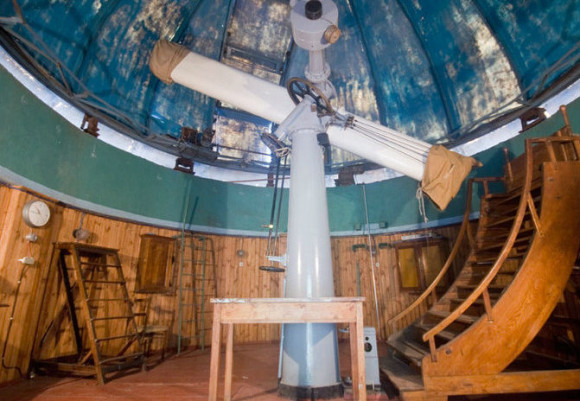
Fig. 8a. Kiev Observatory (© Encyclopedia of Ukraine)
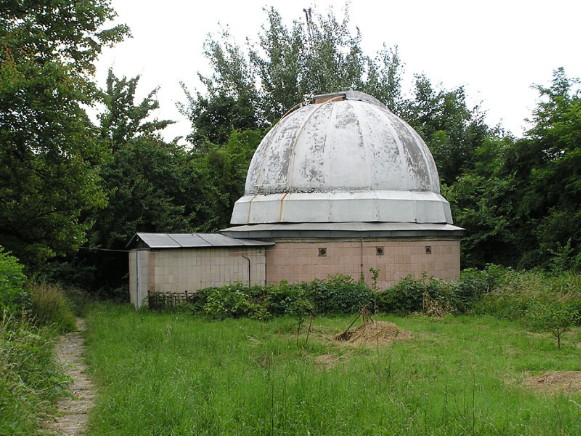
Fig. 8b. Dome of Kiev Observatory (© Encyclopedia of Ukraine)
Kiev City Observatory in the historical part of Kyiv: The Main building is registered as an architecture monument #442 (1979) on the national protection level. "By the Decree of the Expert Committee of the State Service of the National Cultural Heritage in 2007, it was recognized as a historic-cultural monument on the national protection level."
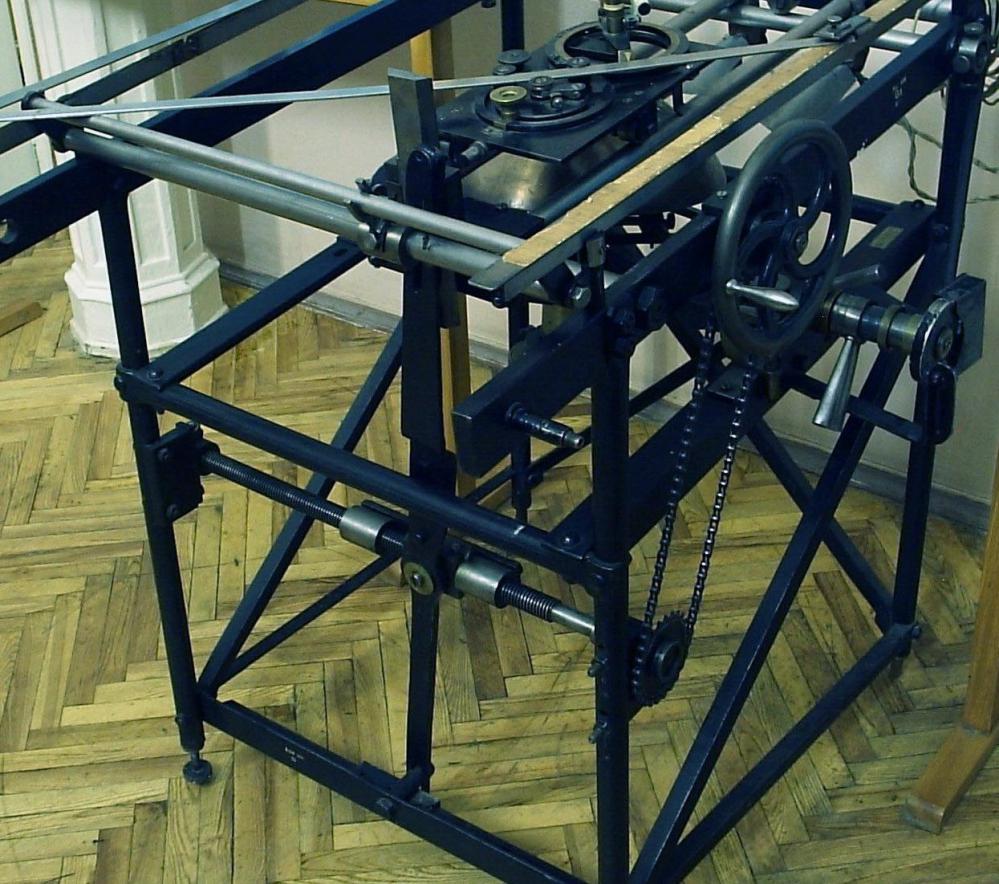
Fig. 8c. Instruments in the Astronomical Museum of Kiev Observatory (© Astronomical Observatory of Kyiv University)
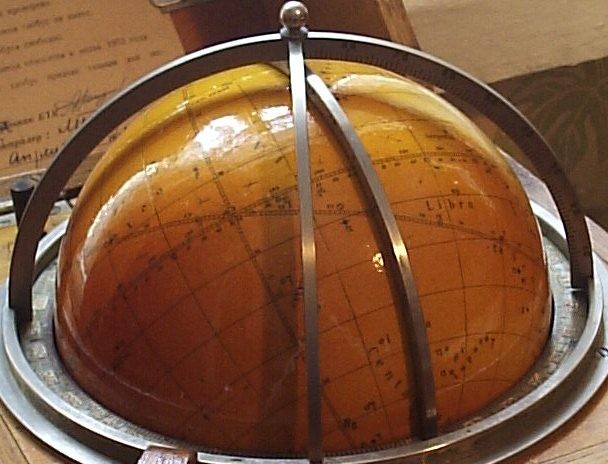
Fig. 8d. Instruments in the Astronomical Museum of Kiev Observatory (© Astronomical Observatory of Kyiv University)
AO KNU Museum:
The original building of 1845 is used as Museum with a rich collection of scientific instruments.
The meridian circle served from 1873 to 1996, and is now in excellent condition in the museum.
Double Refractor Astrograph, Merz of Munich and Repsold of Hamburg (1895) is a historical monument of science & technique, registered as #433/5-Kv.
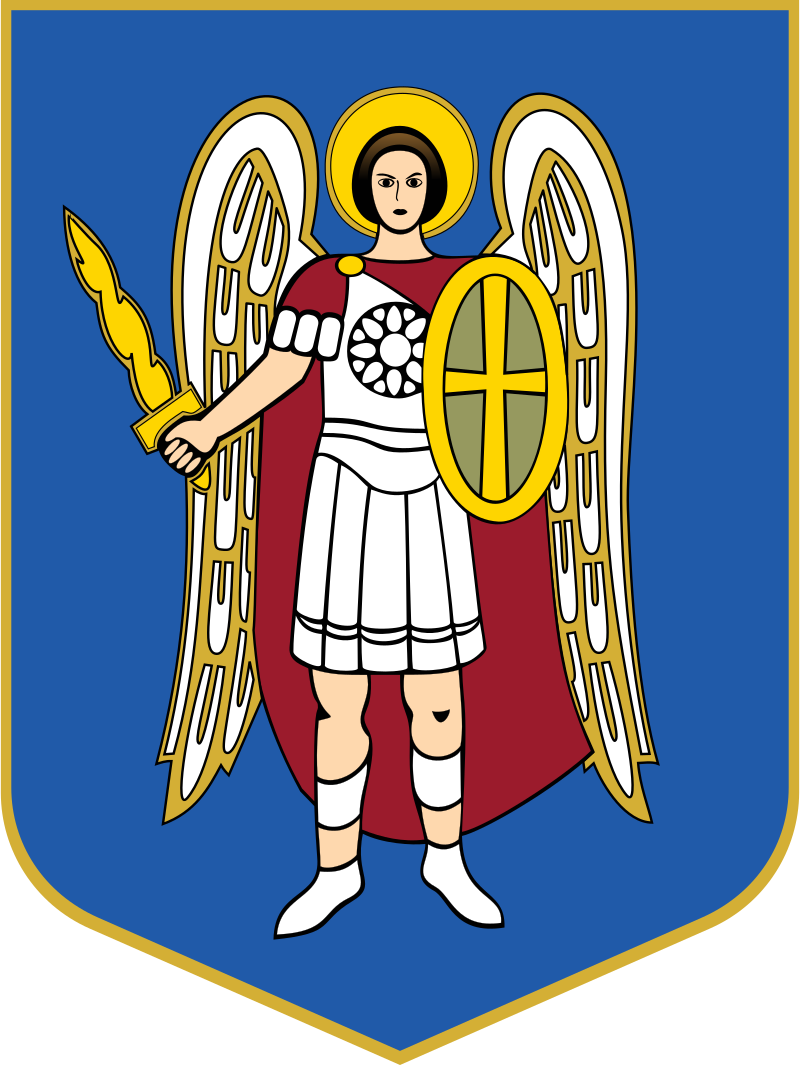
Fig. 8d. Coat of arms of Kiev (Wikipedia)
Comparison with related/similar sites - InfoTheme: Astronomy from the Renaissance to the mid-twentieth century
Entity: 170
Subentity: 1
Version: 3
Status: PUB
Date: 2022-03-15 17:36:25
Author(s): Gudrun Wolfschmidt
Cf. Group of Ukrainian observatories, famous for classical meridian circle astronomy.
See also Astronomical Observatories of Ukraine: Mykolaiv Observatory, Observatory of Kyiv National University, Odessa Observatory, Simeiz, Crimean Astrophysical Observatory near Yalta (2008):
"This transnational nomination brings together important astronomical observatories. Four observatories from the 19th and 20th centuries in Ukraine are included in the nomination: Mykolaiv Observatory, Astronomical Observatory of Kyiv National University, Astronomical Observatory of Odessa National University, and Crimean Astrophysical Observatory." - UNESCO World Heritage, Ukraine Tentative List (2008), Criteria (ii), (iv) and (vi) (cultural).
Threats or potential threats - InfoTheme: Astronomy from the Renaissance to the mid-twentieth century
Entity: 170
Subentity: 1
Version: 3
Status: PUB
Date: 2022-03-04 17:24:58
Author(s): Gudrun Wolfschmidt
no threats, but now there is the war in Ukraine!
Present use - InfoTheme: Astronomy from the Renaissance to the mid-twentieth century
Entity: 170
Subentity: 1
Version: 2
Status: PUB
Date: 2021-08-27 18:46:38
Author(s): Gudrun Wolfschmidt
On the territory of the first observatory in the center of Kiev, there was created an astronomical museum with scientific archives and a collection of astronomical instruments. The exhibits are grouped by area of research.
The new observatory has the following three topics of research: 1. astrophysics, radio astronomy, 2. heliophysics and physics of the solar system, 3. remote aerospace research.
Astronomical relevance today - InfoTheme: Astronomy from the Renaissance to the mid-twentieth century
Entity: 170
Subentity: 1
Version: 4
Status: PUB
Date: 2022-03-04 17:42:25
Author(s): Gudrun Wolfschmidt
The first Kyiv (Kiev, Kiew) Observatory of Kiev National University is used as museum.
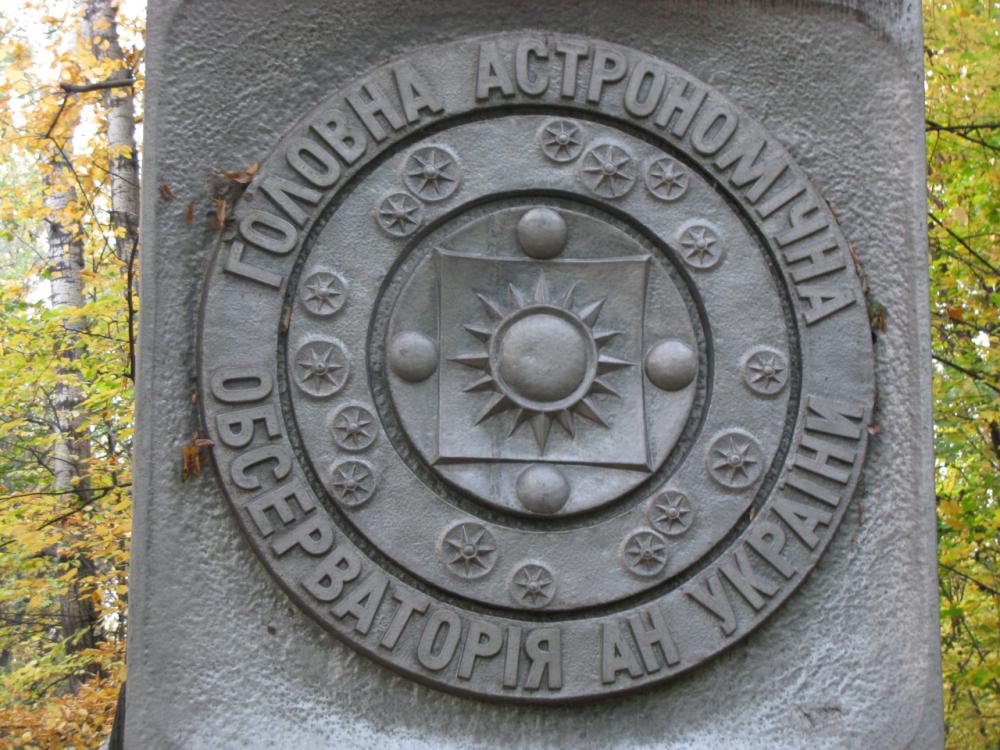
Fig. 9. Entrance to the Main Astronomical Observatory of the National Academy of Sciences of Ukraine (MAO NAS) (Wikipedia)
The new observatory, the Main Astronomical Observatory of the National Academy of Sciences of Ukraine (MAO NAS), Holosiivska (Golosiiv) forest, built in 1944, is used for solar physics, astrophysics, and space research.
In the astrophysical branch observatory on Mt. Terskol (3100m), Elbrus in Caucasus Mountains, built in 1970, there is a 2-m-Reflector of the RCC telescope in a 20-m-dome and a small 60-cm-Reflector.
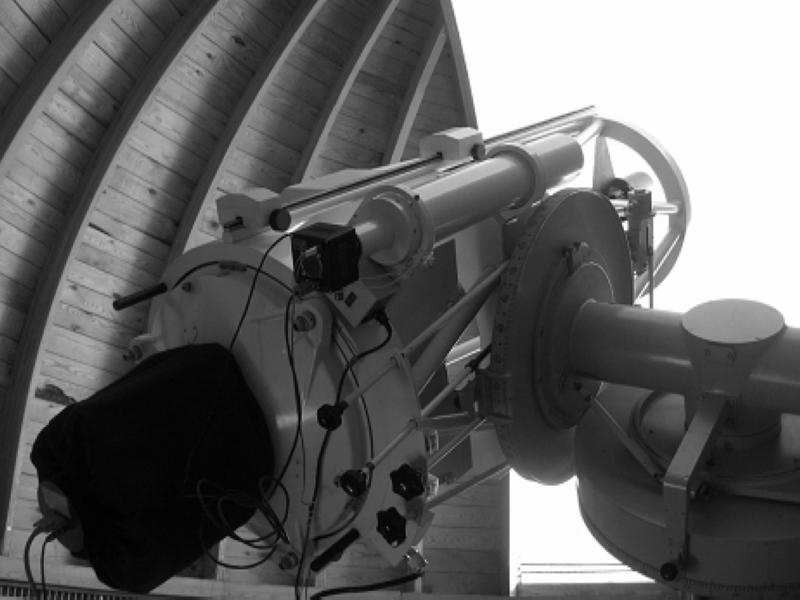
Fig. 10a. Mt. Terskol Observatory, 60-cm-Reflector (MAO NAS)
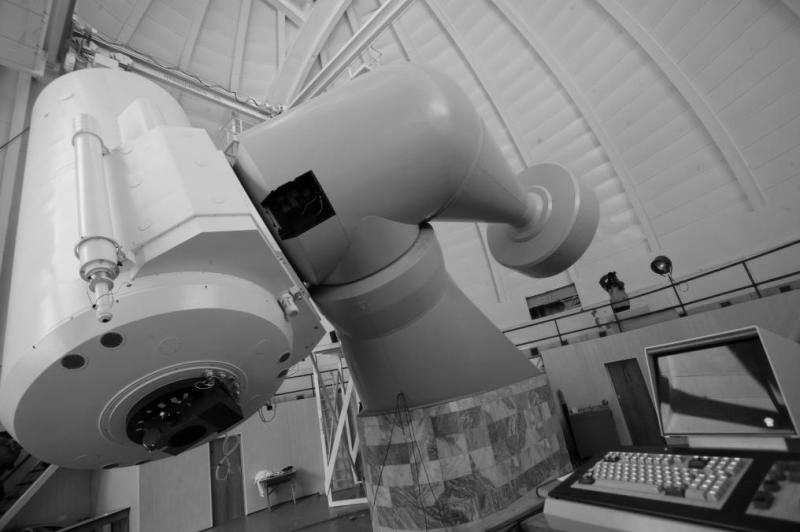
Fig. 10b. Mt. Terskol Observatory, 2-m-Reflector of the RCC telescope (MAO NAS)
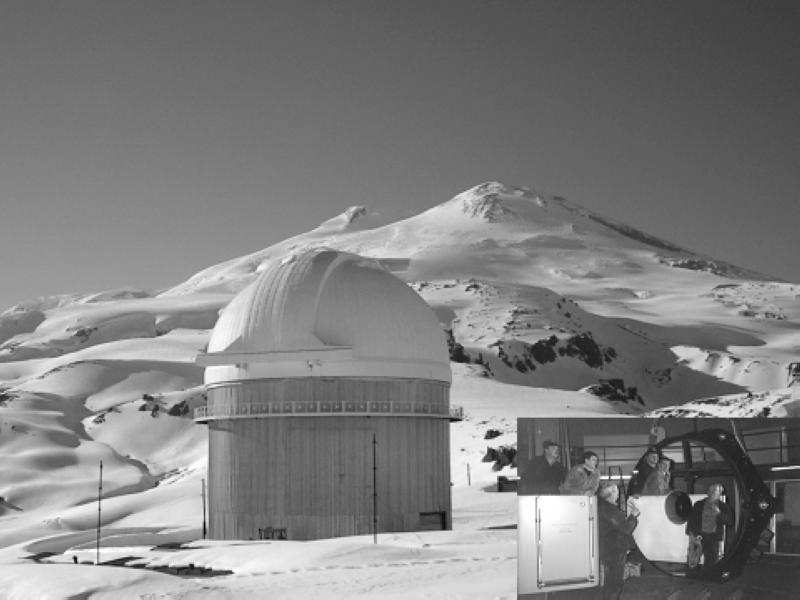
Fig. 9c. Mt. Terskol Observatory with the dome of the 2-m-Reflector of the RCC telescope (MAO NAS)
References
Bibliography (books and published articles) - InfoTheme: Astronomy from the Renaissance to the mid-twentieth century
Entity: 170
Subentity: 1
Version: 5
Status: PUB
Date: 2022-04-10 19:04:24
Author(s): Gudrun Wolfschmidt
- Artemenko, T.G.; Balyshev, M.A. & Irina B. Vavilova: The Struve dynasty in the history of astronomy in Ukraine. In: Kinematics and Physics of Celestial Bodies 25 (2009), No. 3, p. 153-167.
- Bogorodskiy, A.F. & A.N. Chernov: Create Astronomical Observatory of Kiev University and began her scientific activity II. In: Bulletin of the University of Kiev, Astronomy, vol. 21, Kiev 1979.
- Fedorow, Wassili: Beobachtung der Sonnenfinsterniß vom 7ten Juli 1842 in Tschernigow. In: Astronomische Nachrichten 20 (1843), Nr. 470, Heft 14, p. 235-240.
- Gorodchanina, L.: Main Astronomical Observatory of the National Academy of Sciences of Ukraine. Kyiv: VPK "Express-polygraph" 2014.
- Gurshtein, Alexander A.: Orlov, Alexander Yakovlevich. In: Biographical Encyclopedia of Astronomers 1628-1629.
- Kazantseva, Liliya V. & Sergey A. Salata: A comprehensive study of the scientific heritage of the Astronomical Observatory of Kyiv University. In: Wolfschmidt, Gudrun (ed.): Enhancing University Heritage-Based Research. Proceedings of the XV Universeum Network Meeting, Hamburg, 12-14 June 2014. Hamburg: tredition (Nuncius Hamburgensis; Band 33) 2016, p. 116-118.
- Pavlenko, Ya.V.; Vavilova, I.B: & T. Kostiuk: Astronomy in Ukraine. In: Heck, André (ed.): Organizations and Strategies in Astronomy, Vol. 7. Dordrecht, The Netherlands: Springer (Astrophysics and Space Science Library) 2006, p. 71-96.
- Pinigin, G.I. et al.: B5. Astronomical Observatories in Ukraine relevance to the Unesco Astronomy World Heritage Initiative. In: Astronomy and World Heritage: Across Time and Continents. Proceedings of the UNESCO Conference Kazan, August 2009. Ed. by Mikhail Ya. Marov. Associate Scientific Editors: Olga B. Dluzhnevskaya, Jarita C. Holbrook, Viktor K. Abalakin, Yuri A. Nefedyev, Tamila M. Potyomkina. International Astronomical Union, UNESCO. Kazan: Publishing House of Kazan University 2016, p. 203-211.
- Sergeev, Alexander V. & Vladimir Tarady: The Terskol Observatory in the Northern Caucasus. Lecture at the Astronomical Seminar in Sofia on 30.11.2006. In: Bulgarian Astronomical Journal 9 (2007), p. 121-126.
- Vdovenko, N. & L. Kazantseva: Kiev. Astronomical Observatory of Kiev National University. On a visit to the luminaries. Kyiv: National Technical University of Ukraine "Igor Sikorsky Kyiv Polytechnic Institute" (2008). (https://kpi.ua/en/836-11).
- Yatskiv Y.S. & Irina B. Vavilova: Astronomy education and scientific schools in Ukraine. In: The Role of Astronomy in Society and Culture. Proceedings IAU Symp. 260. Ed. by D. Valls-Gabaud & A. Boksenberg. Cambridge: University Press 2011, p. 696-703.
Links to external sites - InfoTheme: Astronomy from the Renaissance to the mid-twentieth century
Entity: 170
Subentity: 1
Version: 3
Status: PUB
Date: 2022-03-04 17:30:45
Author(s): Gudrun Wolfschmidt
- Kiev. Astronomical Observatory of Kiev National University. On a visit to the luminaries
- Main Astronomical Observatory NAS of Ukraine
- Ukrainian Virtual Observatory
- Observatories & Planetariums in Kyiv (Kiev)
- Kyiv Astronomical Observatory (Internet Encyclopedia of Ukraine). Encyclopedia of Ukraine, vol. 2 (1988).
- Kiev Observatory (gotoworld)
- Alexander Jakowlewitsch Orlow (1880--1954)
Links to external on-line pictures - InfoTheme: Astronomy from the Renaissance to the mid-twentieth century
Entity: 170
Subentity: 1
Version: 1
Status: PUB
Date: 2021-03-13 03:55:49
Author(s): Gudrun Wolfschmidt
no information available
PrintPrint contents of 'Description' tab
(opens in a new window) Theme
Astronomy from the Renaissance to the mid-twentieth century
Case Study Navigation
- InfoTheme: Astronomy from the Renaissance to the mid-twentieth century
Entity: 170
Subentity: 1
Version: 7
Status: PUB
Date: 2022-03-09 03:23:08
Author(s): Gudrun Wolfschmidt
Kyiv (Kyjiw, German: Kiew, English: Kiev, Russian: Kijew) Astronomical Observatory of National Taras Shevchenko University of Kyiv, Observatorna St. 3, Kyiv, Ukraine -- subordinated to the Ministry of Education and Science of Ukraine
2. New observatory Golosiiv (1944): Main Astronomical Observatory of the National Academy of Sciences of Ukraine (MAO NAS), Holosiivska (Golosiiv) forest, Akademika Zabolotnoho St. 27, 03680 Kyiv-Golosseevo, Ukraine (IAU code 083)
3. Astrophysical branch observatory on Mt. Terskol (3100m), Elbrus in Caucasus Mountains (1970/74)
Location - InfoTheme: Astronomy from the Renaissance to the mid-twentieth century
Entity: 170
Subentity: 1
Version: 5
Status: PUB
Date: 2022-03-09 03:23:58
Author(s): Gudrun Wolfschmidt
Latitude 50°27’10.6’’ N, Longitude 30°30’8.3’’ E, Altitude 184m above mean sea level.
New observatory Golosiiv: Latitude 50°21’47’’ N, Longitude 30°29’45’’ E, Altitude 188m above mean sea level.
IAU observatory code - InfoTheme: Astronomy from the Renaissance to the mid-twentieth century
Entity: 170
Subentity: 1
Version: 1
Status: PUB
Date: 2021-03-13 03:55:49
Author(s): Gudrun Wolfschmidt
085
Description of (scientific/cultural/natural) heritage - InfoTheme: Astronomy from the Renaissance to the mid-twentieth century
Entity: 170
Subentity: 1
Version: 5
Status: PUB
Date: 2022-03-09 03:20:08
Author(s): Gudrun Wolfschmidt

Fig. 1. Astronomical Observatory of the National University of Kyiv (1845) (© Astronomical Observatory of Kyiv University)
Kyiv (Kiev, Kiew) Observatory, located on the Kyiv Observatory Hill, is the oldest observatory in Ukraine and was constructed in 1840 to 1845, later (1860 to 1890) partially rebuild in the simplified style of Classicism. lt has the tower of octahedral shape.

Fig. 2. Plan for the Astronomical Observatory of the National University of Kyiv (1845) (© Astronomical Observatory of Kyiv University)
"The main building - an architectural monument of national importance - has been specially designed and built by renowned architect Vikenty Beretta" (Vdovenko & Kazantseva, 2008).
"The four forge-iron columns with the relief omament, a hand rail of stairs made of cast iron, a tiled stove with stucco moulding are preserved in the central hall." (Pinigin et al., 2016).
The building is orientated in the plane of the meridian. On the West side, there is a meridian room with an exit to the open terrace for using portable instruments. The telescopes have strong fundaments and the dome (1860) is rotatable. The instruments and equipment were either imported from Europe or from St. Petersburg.
Later additional buildings - like laboratories and many pavilions with sliding roofs - were installed in 1946--1960 (meridian circle pavilion, astrograph pavilion, horizontal solar telescope pavilion, three metal pavilions, three brick pavilions). 14 star position catalogues with a high accuracy were compiled.
Outstanding personalities of astronomers worked in Kiev. Until the 1930s, the staff consisted of only two to four employees. The professors of astronomy and the observing astronomer were often educated in Europe. The first director of the observatory, Vasiliy Fedorovich Fedorov (1802--1855) worked first in Dorpat Observatory, 1825 to 1834, active with surveying, and he got in 1838 the call as first Kiev professor of astronomy. Fedorow observed the Total Solar Eclipse in 1842 in Tschernigow.
Other famous astronomers: Robert Fogel, Abdrii Shydlovsky, Mytrofan Khandrykov, Sergei Vsekhsviatsky, and Oleksander Bohorodsky.

Fig. 3a. ACU-5 Horizontal Solar Telescope (Wikipedia, CC3, Amakuha)

Fig. 3b. Double Astrograph, Toepfer (Kiev, id58)
New observatory in the Kiev-Holosiivska (Golosiiv) and on Mt. Terskol (1970/74)
The new Kyiv Observatory, 12 km from Kyiv center in Holosiivska, was founded in 1944 by Alexander Jakowlewitsch Orlow (1880--1954), director from 1944 to 1948 and 1951 to 1952.
An astrophysical branch observatory on Mt. Terskol (3100m), Elbrus in Caucasus Mountains was built in 1970/74.
Research topics from the first observatory to the modern observatory of Kiev: astrometry (stellar catalogues), solar physics and astrophysics, optical and radio observations of meteors; investigations of the Moon, comets and asteroids; the relativistic astrophysics; optical observations of the Earth’s satellites.
History - InfoTheme: Astronomy from the Renaissance to the mid-twentieth century
Entity: 170
Subentity: 1
Version: 16
Status: PUB
Date: 2022-03-15 17:29:34
Author(s): Gudrun Wolfschmidt
Alexander Jakowlewitsch [Aleksandr Yakovlevich] Orlow (1880--1954) was the first director of the new observatory in the Kiev-Holosiivska forest from 1944 to 1948 and 1951 to 1952.
The high-altitude astrophysical observation station on Mt. Terskol, Caucasus, was built in 1970, when Evgen Pavlovich Fedorov (1909--1986) was director.

Fig. 4a. Alexander Jakowlewitsch Orlow (1880--1954), (Wikipedia)

Fig. 4b. Yaroslav Stepanovych Yatskiv (*1940), director since 1975 (Wikipedia, CC3, uk_soborna)
Directors of Kiev-Holosiivska (Golosiiv) Observatory
- 1944 to 1948 Alexandr Yakovlevich Orlov (1880--1954),
Academician of the Academy of Sciences of the USSR - 1948 to 1951 Volodymyr Platonovich Tsesevich (1907--1983),
Corresponding Member of the Academy of Sciences of the Ukrainian SSR - 1951 to 1952 Alexandr Yakovlevich Orlov (1880--1954)
- 1952 to 1959 Avenir Oleksandrovych Yakovkin (1887--1974),
Corresponding Member of the Academy of Sciences of the USSR - 1959 to 1973 Evgen Pavlovich Fedorov (1909--1986),
Academician of the UkSSR Academy of Sciences - 1973 to 1975 Ivan Kirillovych Koval (....),
Doctor of Physical and Mathematical Sciences - Since 1975 Yaroslav Stepanovych Yatskiv (1940--....),
Academician of the National Academy of Sciences of Ukraine
Well-known astronomers
- Gavrilov, Igor Vladimirovich
- Gurtovenko, Ernest Andreevich
- Kolchynsky, Ilya Hryhorovych
- Konoplyova, Valentina Petrovna
- King, Alexei Konstantinovich
- Morozhenko, Nina Nikolaevna
- Onegina, Augusta Borysivna
- Orlov, Mikhail Yakovlevich
- Harin, Arkady Sergeevich
- Shulman, Leonid Markovich

Fig. 5a. Meridian Circle (1870), (Wikipedia, CC3, Amakuha)

Fig. 5b. Meridian Circle (1870), (Kiev, 836-11)
Instruments of the first Kiev Observatory (*1845) until 1944
- Transit Instrument, Ertel of Munich (1838)
- Vertical Circle (D=19cm, f=25cm), Wanschaff of Berlin
- Meridian Circle (D=12.2cm, f=148cm), Repsold (1870), used for observations until 1996.
- Double Refractor Astrograph (D=20cm, 24cm, f=450cm), Repsold of Hamburg and Merz of Munich (1895) in the dome (1860)

Fig. 6a. Double long-focus Astrograph (D=40cm, f=550cm), Töpfer of Potsdam (1946) (Wikipedia, CC3, Amakuha)

Fig. 6b. Double wide-angle short-focus Astrograph, VEB Zeiss of Jena (1975), (Wikipedia, CC3, Amakuha)
Instruments of the Holossijiw (Golosiiv) Observatory (1944)
- Double long-focus Astrograph (D=40cm, f=550cm), Töpfer of Potsdam, optics: Steinheil of Munich (1946), used for studying stellar proper motions, structure of the Galaxy, positions of the Solar System bodies, and Moon study. A new dome for the double long-focus astrograph was completed in 1991.
- AZT-2, 70-cm-Reflecting Telescope (1959) -- the first instrument for astrophysical purposes, used for photometric, spectral, and polarimetric observations of the Solar System bodies and stars. In 2008, a special correction system for tracking of the unstable geostationary satellite, comets, and asteroids was added.
- Small Solar Telescope with a spectrograph
- ACU-5 Horizontal Solar Telescope
- Photospheric-chromospheric Telescope
- Meteor Cameras
- Laboratory instruments: microphotometer, blink comparator, askorecord, calculator, arithmometer, ...
- Double wide-angle short-focus Astrograph (D=40cm, f=200cm), VEB Zeiss of Jena (1975), used for the observation of planets, asteroids, and comets, and for compiling different catalogues like the Northern Sky Survey (FON).
- Laser-TPL-1m-telescope, Station of laser observations of artificial Earth satellites, part of the worldwide network of stations of the International Earth Rotation Service.
- KIT (Kyiv Internet Telescope)

Fig. 6c. Laser-TPL-1m-telescope (Kiev, id60)
Instruments of the high-altitude astrophysical observation station on Mt. Terskol (1970/74)
- 60-cm-Telescope
- 2-m-Reflector -- Ritchey-Chrétien-Coudé (RCC) telescope (1995) in a 20-m-dome

Fig. 7a. AZT-2, 70-cm-Reflecting Telescope (1959) (Wikipedia, CC3, Amakuha)

Fig. 7b. AZT-2, 70-cm-Reflecting Telescope (1959) (© Astronomical Observatory Main Astronomical Observatory of the National Academy of Sciences of Ukraine)
"The telescopes and facilities of the Terskol Observatory, situated 3100m above the sea level in the Northern Caucasus, are presented briefly. The main instrument is a 2-m RCC telescope, equipped with a UBVRI CCD-based photometric complex, spectrograph and Echelle spectrometer. Two small telescopes are in use, too: a 60-cm photometric telescope and a 65-cm solar telescope." (Sergeev & Tarady, 2007).
State of preservation - InfoTheme: Astronomy from the Renaissance to the mid-twentieth century
Entity: 170
Subentity: 1
Version: 6
Status: PUB
Date: 2022-03-15 17:31:47
Author(s): Gudrun Wolfschmidt

Fig. 8a. Kiev Observatory (© Encyclopedia of Ukraine)

Fig. 8b. Dome of Kiev Observatory (© Encyclopedia of Ukraine)
Kiev City Observatory in the historical part of Kyiv: The Main building is registered as an architecture monument #442 (1979) on the national protection level. "By the Decree of the Expert Committee of the State Service of the National Cultural Heritage in 2007, it was recognized as a historic-cultural monument on the national protection level."

Fig. 8c. Instruments in the Astronomical Museum of Kiev Observatory (© Astronomical Observatory of Kyiv University)

Fig. 8d. Instruments in the Astronomical Museum of Kiev Observatory (© Astronomical Observatory of Kyiv University)
AO KNU Museum:
The original building of 1845 is used as Museum with a rich collection of scientific instruments.
The meridian circle served from 1873 to 1996, and is now in excellent condition in the museum.
Double Refractor Astrograph, Merz of Munich and Repsold of Hamburg (1895) is a historical monument of science & technique, registered as #433/5-Kv.

Fig. 8d. Coat of arms of Kiev (Wikipedia)
Comparison with related/similar sites - InfoTheme: Astronomy from the Renaissance to the mid-twentieth century
Entity: 170
Subentity: 1
Version: 3
Status: PUB
Date: 2022-03-15 17:36:25
Author(s): Gudrun Wolfschmidt
Cf. Group of Ukrainian observatories, famous for classical meridian circle astronomy.
See also Astronomical Observatories of Ukraine: Mykolaiv Observatory, Observatory of Kyiv National University, Odessa Observatory, Simeiz, Crimean Astrophysical Observatory near Yalta (2008):
"This transnational nomination brings together important astronomical observatories. Four observatories from the 19th and 20th centuries in Ukraine are included in the nomination: Mykolaiv Observatory, Astronomical Observatory of Kyiv National University, Astronomical Observatory of Odessa National University, and Crimean Astrophysical Observatory." - UNESCO World Heritage, Ukraine Tentative List (2008), Criteria (ii), (iv) and (vi) (cultural).
Threats or potential threats - InfoTheme: Astronomy from the Renaissance to the mid-twentieth century
Entity: 170
Subentity: 1
Version: 3
Status: PUB
Date: 2022-03-04 17:24:58
Author(s): Gudrun Wolfschmidt
no threats, but now there is the war in Ukraine!
Present use - InfoTheme: Astronomy from the Renaissance to the mid-twentieth century
Entity: 170
Subentity: 1
Version: 2
Status: PUB
Date: 2021-08-27 18:46:38
Author(s): Gudrun Wolfschmidt
On the territory of the first observatory in the center of Kiev, there was created an astronomical museum with scientific archives and a collection of astronomical instruments. The exhibits are grouped by area of research.
The new observatory has the following three topics of research: 1. astrophysics, radio astronomy, 2. heliophysics and physics of the solar system, 3. remote aerospace research.
Astronomical relevance today - InfoTheme: Astronomy from the Renaissance to the mid-twentieth century
Entity: 170
Subentity: 1
Version: 4
Status: PUB
Date: 2022-03-04 17:42:25
Author(s): Gudrun Wolfschmidt
The first Kyiv (Kiev, Kiew) Observatory of Kiev National University is used as museum.

Fig. 9. Entrance to the Main Astronomical Observatory of the National Academy of Sciences of Ukraine (MAO NAS) (Wikipedia)
The new observatory, the Main Astronomical Observatory of the National Academy of Sciences of Ukraine (MAO NAS), Holosiivska (Golosiiv) forest, built in 1944, is used for solar physics, astrophysics, and space research.
In the astrophysical branch observatory on Mt. Terskol (3100m), Elbrus in Caucasus Mountains, built in 1970, there is a 2-m-Reflector of the RCC telescope in a 20-m-dome and a small 60-cm-Reflector.

Fig. 10a. Mt. Terskol Observatory, 60-cm-Reflector (MAO NAS)

Fig. 10b. Mt. Terskol Observatory, 2-m-Reflector of the RCC telescope (MAO NAS)

Fig. 9c. Mt. Terskol Observatory with the dome of the 2-m-Reflector of the RCC telescope (MAO NAS)
References
Bibliography (books and published articles) - InfoTheme: Astronomy from the Renaissance to the mid-twentieth century
Entity: 170
Subentity: 1
Version: 5
Status: PUB
Date: 2022-04-10 19:04:24
Author(s): Gudrun Wolfschmidt
- Artemenko, T.G.; Balyshev, M.A. & Irina B. Vavilova: The Struve dynasty in the history of astronomy in Ukraine. In: Kinematics and Physics of Celestial Bodies 25 (2009), No. 3, p. 153-167.
- Bogorodskiy, A.F. & A.N. Chernov: Create Astronomical Observatory of Kiev University and began her scientific activity II. In: Bulletin of the University of Kiev, Astronomy, vol. 21, Kiev 1979.
- Fedorow, Wassili: Beobachtung der Sonnenfinsterniß vom 7ten Juli 1842 in Tschernigow. In: Astronomische Nachrichten 20 (1843), Nr. 470, Heft 14, p. 235-240.
- Gorodchanina, L.: Main Astronomical Observatory of the National Academy of Sciences of Ukraine. Kyiv: VPK "Express-polygraph" 2014.
- Gurshtein, Alexander A.: Orlov, Alexander Yakovlevich. In: Biographical Encyclopedia of Astronomers 1628-1629.
- Kazantseva, Liliya V. & Sergey A. Salata: A comprehensive study of the scientific heritage of the Astronomical Observatory of Kyiv University. In: Wolfschmidt, Gudrun (ed.): Enhancing University Heritage-Based Research. Proceedings of the XV Universeum Network Meeting, Hamburg, 12-14 June 2014. Hamburg: tredition (Nuncius Hamburgensis; Band 33) 2016, p. 116-118.
- Pavlenko, Ya.V.; Vavilova, I.B: & T. Kostiuk: Astronomy in Ukraine. In: Heck, André (ed.): Organizations and Strategies in Astronomy, Vol. 7. Dordrecht, The Netherlands: Springer (Astrophysics and Space Science Library) 2006, p. 71-96.
- Pinigin, G.I. et al.: B5. Astronomical Observatories in Ukraine relevance to the Unesco Astronomy World Heritage Initiative. In: Astronomy and World Heritage: Across Time and Continents. Proceedings of the UNESCO Conference Kazan, August 2009. Ed. by Mikhail Ya. Marov. Associate Scientific Editors: Olga B. Dluzhnevskaya, Jarita C. Holbrook, Viktor K. Abalakin, Yuri A. Nefedyev, Tamila M. Potyomkina. International Astronomical Union, UNESCO. Kazan: Publishing House of Kazan University 2016, p. 203-211.
- Sergeev, Alexander V. & Vladimir Tarady: The Terskol Observatory in the Northern Caucasus. Lecture at the Astronomical Seminar in Sofia on 30.11.2006. In: Bulgarian Astronomical Journal 9 (2007), p. 121-126.
- Vdovenko, N. & L. Kazantseva: Kiev. Astronomical Observatory of Kiev National University. On a visit to the luminaries. Kyiv: National Technical University of Ukraine "Igor Sikorsky Kyiv Polytechnic Institute" (2008). (https://kpi.ua/en/836-11).
- Yatskiv Y.S. & Irina B. Vavilova: Astronomy education and scientific schools in Ukraine. In: The Role of Astronomy in Society and Culture. Proceedings IAU Symp. 260. Ed. by D. Valls-Gabaud & A. Boksenberg. Cambridge: University Press 2011, p. 696-703.
Links to external sites - InfoTheme: Astronomy from the Renaissance to the mid-twentieth century
Entity: 170
Subentity: 1
Version: 3
Status: PUB
Date: 2022-03-04 17:30:45
Author(s): Gudrun Wolfschmidt
- Kiev. Astronomical Observatory of Kiev National University. On a visit to the luminaries
- Main Astronomical Observatory NAS of Ukraine
- Ukrainian Virtual Observatory
- Observatories & Planetariums in Kyiv (Kiev)
- Kyiv Astronomical Observatory (Internet Encyclopedia of Ukraine). Encyclopedia of Ukraine, vol. 2 (1988).
- Kiev Observatory (gotoworld)
- Alexander Jakowlewitsch Orlow (1880--1954)
Links to external on-line pictures - InfoTheme: Astronomy from the Renaissance to the mid-twentieth century
Entity: 170
Subentity: 1
Version: 1
Status: PUB
Date: 2021-03-13 03:55:49
Author(s): Gudrun Wolfschmidt
no information available
PrintPrint contents of 'Description' tab
(opens in a new window) Theme
Astronomy from the Renaissance to the mid-twentieth century
Case Study Navigation
- InfoTheme: Astronomy from the Renaissance to the mid-twentieth century
Entity: 170
Subentity: 1
Version: 5
Status: PUB
Date: 2022-03-09 03:23:58
Author(s): Gudrun Wolfschmidt
Latitude 50°27’10.6’’ N, Longitude 30°30’8.3’’ E, Altitude 184m above mean sea level.
New observatory Golosiiv: Latitude 50°21’47’’ N, Longitude 30°29’45’’ E, Altitude 188m above mean sea level.
IAU observatory code - InfoTheme: Astronomy from the Renaissance to the mid-twentieth century
Entity: 170
Subentity: 1
Version: 1
Status: PUB
Date: 2021-03-13 03:55:49
Author(s): Gudrun Wolfschmidt
085
Description of (scientific/cultural/natural) heritage - InfoTheme: Astronomy from the Renaissance to the mid-twentieth century
Entity: 170
Subentity: 1
Version: 5
Status: PUB
Date: 2022-03-09 03:20:08
Author(s): Gudrun Wolfschmidt

Fig. 1. Astronomical Observatory of the National University of Kyiv (1845) (© Astronomical Observatory of Kyiv University)
Kyiv (Kiev, Kiew) Observatory, located on the Kyiv Observatory Hill, is the oldest observatory in Ukraine and was constructed in 1840 to 1845, later (1860 to 1890) partially rebuild in the simplified style of Classicism. lt has the tower of octahedral shape.

Fig. 2. Plan for the Astronomical Observatory of the National University of Kyiv (1845) (© Astronomical Observatory of Kyiv University)
"The main building - an architectural monument of national importance - has been specially designed and built by renowned architect Vikenty Beretta" (Vdovenko & Kazantseva, 2008).
"The four forge-iron columns with the relief omament, a hand rail of stairs made of cast iron, a tiled stove with stucco moulding are preserved in the central hall." (Pinigin et al., 2016).
The building is orientated in the plane of the meridian. On the West side, there is a meridian room with an exit to the open terrace for using portable instruments. The telescopes have strong fundaments and the dome (1860) is rotatable. The instruments and equipment were either imported from Europe or from St. Petersburg.
Later additional buildings - like laboratories and many pavilions with sliding roofs - were installed in 1946--1960 (meridian circle pavilion, astrograph pavilion, horizontal solar telescope pavilion, three metal pavilions, three brick pavilions). 14 star position catalogues with a high accuracy were compiled.
Outstanding personalities of astronomers worked in Kiev. Until the 1930s, the staff consisted of only two to four employees. The professors of astronomy and the observing astronomer were often educated in Europe. The first director of the observatory, Vasiliy Fedorovich Fedorov (1802--1855) worked first in Dorpat Observatory, 1825 to 1834, active with surveying, and he got in 1838 the call as first Kiev professor of astronomy. Fedorow observed the Total Solar Eclipse in 1842 in Tschernigow.
Other famous astronomers: Robert Fogel, Abdrii Shydlovsky, Mytrofan Khandrykov, Sergei Vsekhsviatsky, and Oleksander Bohorodsky.

Fig. 3a. ACU-5 Horizontal Solar Telescope (Wikipedia, CC3, Amakuha)

Fig. 3b. Double Astrograph, Toepfer (Kiev, id58)
New observatory in the Kiev-Holosiivska (Golosiiv) and on Mt. Terskol (1970/74)
The new Kyiv Observatory, 12 km from Kyiv center in Holosiivska, was founded in 1944 by Alexander Jakowlewitsch Orlow (1880--1954), director from 1944 to 1948 and 1951 to 1952.
An astrophysical branch observatory on Mt. Terskol (3100m), Elbrus in Caucasus Mountains was built in 1970/74.
Research topics from the first observatory to the modern observatory of Kiev: astrometry (stellar catalogues), solar physics and astrophysics, optical and radio observations of meteors; investigations of the Moon, comets and asteroids; the relativistic astrophysics; optical observations of the Earth’s satellites.
History - InfoTheme: Astronomy from the Renaissance to the mid-twentieth century
Entity: 170
Subentity: 1
Version: 16
Status: PUB
Date: 2022-03-15 17:29:34
Author(s): Gudrun Wolfschmidt
Alexander Jakowlewitsch [Aleksandr Yakovlevich] Orlow (1880--1954) was the first director of the new observatory in the Kiev-Holosiivska forest from 1944 to 1948 and 1951 to 1952.
The high-altitude astrophysical observation station on Mt. Terskol, Caucasus, was built in 1970, when Evgen Pavlovich Fedorov (1909--1986) was director.

Fig. 4a. Alexander Jakowlewitsch Orlow (1880--1954), (Wikipedia)

Fig. 4b. Yaroslav Stepanovych Yatskiv (*1940), director since 1975 (Wikipedia, CC3, uk_soborna)
Directors of Kiev-Holosiivska (Golosiiv) Observatory
- 1944 to 1948 Alexandr Yakovlevich Orlov (1880--1954),
Academician of the Academy of Sciences of the USSR - 1948 to 1951 Volodymyr Platonovich Tsesevich (1907--1983),
Corresponding Member of the Academy of Sciences of the Ukrainian SSR - 1951 to 1952 Alexandr Yakovlevich Orlov (1880--1954)
- 1952 to 1959 Avenir Oleksandrovych Yakovkin (1887--1974),
Corresponding Member of the Academy of Sciences of the USSR - 1959 to 1973 Evgen Pavlovich Fedorov (1909--1986),
Academician of the UkSSR Academy of Sciences - 1973 to 1975 Ivan Kirillovych Koval (....),
Doctor of Physical and Mathematical Sciences - Since 1975 Yaroslav Stepanovych Yatskiv (1940--....),
Academician of the National Academy of Sciences of Ukraine
Well-known astronomers
- Gavrilov, Igor Vladimirovich
- Gurtovenko, Ernest Andreevich
- Kolchynsky, Ilya Hryhorovych
- Konoplyova, Valentina Petrovna
- King, Alexei Konstantinovich
- Morozhenko, Nina Nikolaevna
- Onegina, Augusta Borysivna
- Orlov, Mikhail Yakovlevich
- Harin, Arkady Sergeevich
- Shulman, Leonid Markovich

Fig. 5a. Meridian Circle (1870), (Wikipedia, CC3, Amakuha)

Fig. 5b. Meridian Circle (1870), (Kiev, 836-11)
Instruments of the first Kiev Observatory (*1845) until 1944
- Transit Instrument, Ertel of Munich (1838)
- Vertical Circle (D=19cm, f=25cm), Wanschaff of Berlin
- Meridian Circle (D=12.2cm, f=148cm), Repsold (1870), used for observations until 1996.
- Double Refractor Astrograph (D=20cm, 24cm, f=450cm), Repsold of Hamburg and Merz of Munich (1895) in the dome (1860)

Fig. 6a. Double long-focus Astrograph (D=40cm, f=550cm), Töpfer of Potsdam (1946) (Wikipedia, CC3, Amakuha)

Fig. 6b. Double wide-angle short-focus Astrograph, VEB Zeiss of Jena (1975), (Wikipedia, CC3, Amakuha)
Instruments of the Holossijiw (Golosiiv) Observatory (1944)
- Double long-focus Astrograph (D=40cm, f=550cm), Töpfer of Potsdam, optics: Steinheil of Munich (1946), used for studying stellar proper motions, structure of the Galaxy, positions of the Solar System bodies, and Moon study. A new dome for the double long-focus astrograph was completed in 1991.
- AZT-2, 70-cm-Reflecting Telescope (1959) -- the first instrument for astrophysical purposes, used for photometric, spectral, and polarimetric observations of the Solar System bodies and stars. In 2008, a special correction system for tracking of the unstable geostationary satellite, comets, and asteroids was added.
- Small Solar Telescope with a spectrograph
- ACU-5 Horizontal Solar Telescope
- Photospheric-chromospheric Telescope
- Meteor Cameras
- Laboratory instruments: microphotometer, blink comparator, askorecord, calculator, arithmometer, ...
- Double wide-angle short-focus Astrograph (D=40cm, f=200cm), VEB Zeiss of Jena (1975), used for the observation of planets, asteroids, and comets, and for compiling different catalogues like the Northern Sky Survey (FON).
- Laser-TPL-1m-telescope, Station of laser observations of artificial Earth satellites, part of the worldwide network of stations of the International Earth Rotation Service.
- KIT (Kyiv Internet Telescope)

Fig. 6c. Laser-TPL-1m-telescope (Kiev, id60)
Instruments of the high-altitude astrophysical observation station on Mt. Terskol (1970/74)
- 60-cm-Telescope
- 2-m-Reflector -- Ritchey-Chrétien-Coudé (RCC) telescope (1995) in a 20-m-dome

Fig. 7a. AZT-2, 70-cm-Reflecting Telescope (1959) (Wikipedia, CC3, Amakuha)

Fig. 7b. AZT-2, 70-cm-Reflecting Telescope (1959) (© Astronomical Observatory Main Astronomical Observatory of the National Academy of Sciences of Ukraine)
"The telescopes and facilities of the Terskol Observatory, situated 3100m above the sea level in the Northern Caucasus, are presented briefly. The main instrument is a 2-m RCC telescope, equipped with a UBVRI CCD-based photometric complex, spectrograph and Echelle spectrometer. Two small telescopes are in use, too: a 60-cm photometric telescope and a 65-cm solar telescope." (Sergeev & Tarady, 2007).
State of preservation - InfoTheme: Astronomy from the Renaissance to the mid-twentieth century
Entity: 170
Subentity: 1
Version: 6
Status: PUB
Date: 2022-03-15 17:31:47
Author(s): Gudrun Wolfschmidt

Fig. 8a. Kiev Observatory (© Encyclopedia of Ukraine)

Fig. 8b. Dome of Kiev Observatory (© Encyclopedia of Ukraine)
Kiev City Observatory in the historical part of Kyiv: The Main building is registered as an architecture monument #442 (1979) on the national protection level. "By the Decree of the Expert Committee of the State Service of the National Cultural Heritage in 2007, it was recognized as a historic-cultural monument on the national protection level."

Fig. 8c. Instruments in the Astronomical Museum of Kiev Observatory (© Astronomical Observatory of Kyiv University)

Fig. 8d. Instruments in the Astronomical Museum of Kiev Observatory (© Astronomical Observatory of Kyiv University)
AO KNU Museum:
The original building of 1845 is used as Museum with a rich collection of scientific instruments.
The meridian circle served from 1873 to 1996, and is now in excellent condition in the museum.
Double Refractor Astrograph, Merz of Munich and Repsold of Hamburg (1895) is a historical monument of science & technique, registered as #433/5-Kv.

Fig. 8d. Coat of arms of Kiev (Wikipedia)
Comparison with related/similar sites - InfoTheme: Astronomy from the Renaissance to the mid-twentieth century
Entity: 170
Subentity: 1
Version: 3
Status: PUB
Date: 2022-03-15 17:36:25
Author(s): Gudrun Wolfschmidt
Cf. Group of Ukrainian observatories, famous for classical meridian circle astronomy.
See also Astronomical Observatories of Ukraine: Mykolaiv Observatory, Observatory of Kyiv National University, Odessa Observatory, Simeiz, Crimean Astrophysical Observatory near Yalta (2008):
"This transnational nomination brings together important astronomical observatories. Four observatories from the 19th and 20th centuries in Ukraine are included in the nomination: Mykolaiv Observatory, Astronomical Observatory of Kyiv National University, Astronomical Observatory of Odessa National University, and Crimean Astrophysical Observatory." - UNESCO World Heritage, Ukraine Tentative List (2008), Criteria (ii), (iv) and (vi) (cultural).
Threats or potential threats - InfoTheme: Astronomy from the Renaissance to the mid-twentieth century
Entity: 170
Subentity: 1
Version: 3
Status: PUB
Date: 2022-03-04 17:24:58
Author(s): Gudrun Wolfschmidt
no threats, but now there is the war in Ukraine!
Present use - InfoTheme: Astronomy from the Renaissance to the mid-twentieth century
Entity: 170
Subentity: 1
Version: 2
Status: PUB
Date: 2021-08-27 18:46:38
Author(s): Gudrun Wolfschmidt
On the territory of the first observatory in the center of Kiev, there was created an astronomical museum with scientific archives and a collection of astronomical instruments. The exhibits are grouped by area of research.
The new observatory has the following three topics of research: 1. astrophysics, radio astronomy, 2. heliophysics and physics of the solar system, 3. remote aerospace research.
Astronomical relevance today - InfoTheme: Astronomy from the Renaissance to the mid-twentieth century
Entity: 170
Subentity: 1
Version: 4
Status: PUB
Date: 2022-03-04 17:42:25
Author(s): Gudrun Wolfschmidt
The first Kyiv (Kiev, Kiew) Observatory of Kiev National University is used as museum.

Fig. 9. Entrance to the Main Astronomical Observatory of the National Academy of Sciences of Ukraine (MAO NAS) (Wikipedia)
The new observatory, the Main Astronomical Observatory of the National Academy of Sciences of Ukraine (MAO NAS), Holosiivska (Golosiiv) forest, built in 1944, is used for solar physics, astrophysics, and space research.
In the astrophysical branch observatory on Mt. Terskol (3100m), Elbrus in Caucasus Mountains, built in 1970, there is a 2-m-Reflector of the RCC telescope in a 20-m-dome and a small 60-cm-Reflector.

Fig. 10a. Mt. Terskol Observatory, 60-cm-Reflector (MAO NAS)

Fig. 10b. Mt. Terskol Observatory, 2-m-Reflector of the RCC telescope (MAO NAS)

Fig. 9c. Mt. Terskol Observatory with the dome of the 2-m-Reflector of the RCC telescope (MAO NAS)
References
Bibliography (books and published articles) - InfoTheme: Astronomy from the Renaissance to the mid-twentieth century
Entity: 170
Subentity: 1
Version: 5
Status: PUB
Date: 2022-04-10 19:04:24
Author(s): Gudrun Wolfschmidt
- Artemenko, T.G.; Balyshev, M.A. & Irina B. Vavilova: The Struve dynasty in the history of astronomy in Ukraine. In: Kinematics and Physics of Celestial Bodies 25 (2009), No. 3, p. 153-167.
- Bogorodskiy, A.F. & A.N. Chernov: Create Astronomical Observatory of Kiev University and began her scientific activity II. In: Bulletin of the University of Kiev, Astronomy, vol. 21, Kiev 1979.
- Fedorow, Wassili: Beobachtung der Sonnenfinsterniß vom 7ten Juli 1842 in Tschernigow. In: Astronomische Nachrichten 20 (1843), Nr. 470, Heft 14, p. 235-240.
- Gorodchanina, L.: Main Astronomical Observatory of the National Academy of Sciences of Ukraine. Kyiv: VPK "Express-polygraph" 2014.
- Gurshtein, Alexander A.: Orlov, Alexander Yakovlevich. In: Biographical Encyclopedia of Astronomers 1628-1629.
- Kazantseva, Liliya V. & Sergey A. Salata: A comprehensive study of the scientific heritage of the Astronomical Observatory of Kyiv University. In: Wolfschmidt, Gudrun (ed.): Enhancing University Heritage-Based Research. Proceedings of the XV Universeum Network Meeting, Hamburg, 12-14 June 2014. Hamburg: tredition (Nuncius Hamburgensis; Band 33) 2016, p. 116-118.
- Pavlenko, Ya.V.; Vavilova, I.B: & T. Kostiuk: Astronomy in Ukraine. In: Heck, André (ed.): Organizations and Strategies in Astronomy, Vol. 7. Dordrecht, The Netherlands: Springer (Astrophysics and Space Science Library) 2006, p. 71-96.
- Pinigin, G.I. et al.: B5. Astronomical Observatories in Ukraine relevance to the Unesco Astronomy World Heritage Initiative. In: Astronomy and World Heritage: Across Time and Continents. Proceedings of the UNESCO Conference Kazan, August 2009. Ed. by Mikhail Ya. Marov. Associate Scientific Editors: Olga B. Dluzhnevskaya, Jarita C. Holbrook, Viktor K. Abalakin, Yuri A. Nefedyev, Tamila M. Potyomkina. International Astronomical Union, UNESCO. Kazan: Publishing House of Kazan University 2016, p. 203-211.
- Sergeev, Alexander V. & Vladimir Tarady: The Terskol Observatory in the Northern Caucasus. Lecture at the Astronomical Seminar in Sofia on 30.11.2006. In: Bulgarian Astronomical Journal 9 (2007), p. 121-126.
- Vdovenko, N. & L. Kazantseva: Kiev. Astronomical Observatory of Kiev National University. On a visit to the luminaries. Kyiv: National Technical University of Ukraine "Igor Sikorsky Kyiv Polytechnic Institute" (2008). (https://kpi.ua/en/836-11).
- Yatskiv Y.S. & Irina B. Vavilova: Astronomy education and scientific schools in Ukraine. In: The Role of Astronomy in Society and Culture. Proceedings IAU Symp. 260. Ed. by D. Valls-Gabaud & A. Boksenberg. Cambridge: University Press 2011, p. 696-703.
Links to external sites - InfoTheme: Astronomy from the Renaissance to the mid-twentieth century
Entity: 170
Subentity: 1
Version: 3
Status: PUB
Date: 2022-03-04 17:30:45
Author(s): Gudrun Wolfschmidt
- Kiev. Astronomical Observatory of Kiev National University. On a visit to the luminaries
- Main Astronomical Observatory NAS of Ukraine
- Ukrainian Virtual Observatory
- Observatories & Planetariums in Kyiv (Kiev)
- Kyiv Astronomical Observatory (Internet Encyclopedia of Ukraine). Encyclopedia of Ukraine, vol. 2 (1988).
- Kiev Observatory (gotoworld)
- Alexander Jakowlewitsch Orlow (1880--1954)
Links to external on-line pictures - InfoTheme: Astronomy from the Renaissance to the mid-twentieth century
Entity: 170
Subentity: 1
Version: 1
Status: PUB
Date: 2021-03-13 03:55:49
Author(s): Gudrun Wolfschmidt
no information available
PrintPrint contents of 'Description' tab
(opens in a new window) Theme
Astronomy from the Renaissance to the mid-twentieth century
Case Study Navigation
- InfoTheme: Astronomy from the Renaissance to the mid-twentieth century
Entity: 170
Subentity: 1
Version: 1
Status: PUB
Date: 2021-03-13 03:55:49
Author(s): Gudrun Wolfschmidt
085
Description of (scientific/cultural/natural) heritage - InfoTheme: Astronomy from the Renaissance to the mid-twentieth century
Entity: 170
Subentity: 1
Version: 5
Status: PUB
Date: 2022-03-09 03:20:08
Author(s): Gudrun Wolfschmidt

Fig. 1. Astronomical Observatory of the National University of Kyiv (1845) (© Astronomical Observatory of Kyiv University)
Kyiv (Kiev, Kiew) Observatory, located on the Kyiv Observatory Hill, is the oldest observatory in Ukraine and was constructed in 1840 to 1845, later (1860 to 1890) partially rebuild in the simplified style of Classicism. lt has the tower of octahedral shape.

Fig. 2. Plan for the Astronomical Observatory of the National University of Kyiv (1845) (© Astronomical Observatory of Kyiv University)
"The main building - an architectural monument of national importance - has been specially designed and built by renowned architect Vikenty Beretta" (Vdovenko & Kazantseva, 2008).
"The four forge-iron columns with the relief omament, a hand rail of stairs made of cast iron, a tiled stove with stucco moulding are preserved in the central hall." (Pinigin et al., 2016).
The building is orientated in the plane of the meridian. On the West side, there is a meridian room with an exit to the open terrace for using portable instruments. The telescopes have strong fundaments and the dome (1860) is rotatable. The instruments and equipment were either imported from Europe or from St. Petersburg.
Later additional buildings - like laboratories and many pavilions with sliding roofs - were installed in 1946--1960 (meridian circle pavilion, astrograph pavilion, horizontal solar telescope pavilion, three metal pavilions, three brick pavilions). 14 star position catalogues with a high accuracy were compiled.
Outstanding personalities of astronomers worked in Kiev. Until the 1930s, the staff consisted of only two to four employees. The professors of astronomy and the observing astronomer were often educated in Europe. The first director of the observatory, Vasiliy Fedorovich Fedorov (1802--1855) worked first in Dorpat Observatory, 1825 to 1834, active with surveying, and he got in 1838 the call as first Kiev professor of astronomy. Fedorow observed the Total Solar Eclipse in 1842 in Tschernigow.
Other famous astronomers: Robert Fogel, Abdrii Shydlovsky, Mytrofan Khandrykov, Sergei Vsekhsviatsky, and Oleksander Bohorodsky.

Fig. 3a. ACU-5 Horizontal Solar Telescope (Wikipedia, CC3, Amakuha)

Fig. 3b. Double Astrograph, Toepfer (Kiev, id58)
New observatory in the Kiev-Holosiivska (Golosiiv) and on Mt. Terskol (1970/74)
The new Kyiv Observatory, 12 km from Kyiv center in Holosiivska, was founded in 1944 by Alexander Jakowlewitsch Orlow (1880--1954), director from 1944 to 1948 and 1951 to 1952.
An astrophysical branch observatory on Mt. Terskol (3100m), Elbrus in Caucasus Mountains was built in 1970/74.
Research topics from the first observatory to the modern observatory of Kiev: astrometry (stellar catalogues), solar physics and astrophysics, optical and radio observations of meteors; investigations of the Moon, comets and asteroids; the relativistic astrophysics; optical observations of the Earth’s satellites.
History - InfoTheme: Astronomy from the Renaissance to the mid-twentieth century
Entity: 170
Subentity: 1
Version: 16
Status: PUB
Date: 2022-03-15 17:29:34
Author(s): Gudrun Wolfschmidt
Alexander Jakowlewitsch [Aleksandr Yakovlevich] Orlow (1880--1954) was the first director of the new observatory in the Kiev-Holosiivska forest from 1944 to 1948 and 1951 to 1952.
The high-altitude astrophysical observation station on Mt. Terskol, Caucasus, was built in 1970, when Evgen Pavlovich Fedorov (1909--1986) was director.

Fig. 4a. Alexander Jakowlewitsch Orlow (1880--1954), (Wikipedia)

Fig. 4b. Yaroslav Stepanovych Yatskiv (*1940), director since 1975 (Wikipedia, CC3, uk_soborna)
Directors of Kiev-Holosiivska (Golosiiv) Observatory
- 1944 to 1948 Alexandr Yakovlevich Orlov (1880--1954),
Academician of the Academy of Sciences of the USSR - 1948 to 1951 Volodymyr Platonovich Tsesevich (1907--1983),
Corresponding Member of the Academy of Sciences of the Ukrainian SSR - 1951 to 1952 Alexandr Yakovlevich Orlov (1880--1954)
- 1952 to 1959 Avenir Oleksandrovych Yakovkin (1887--1974),
Corresponding Member of the Academy of Sciences of the USSR - 1959 to 1973 Evgen Pavlovich Fedorov (1909--1986),
Academician of the UkSSR Academy of Sciences - 1973 to 1975 Ivan Kirillovych Koval (....),
Doctor of Physical and Mathematical Sciences - Since 1975 Yaroslav Stepanovych Yatskiv (1940--....),
Academician of the National Academy of Sciences of Ukraine
Well-known astronomers
- Gavrilov, Igor Vladimirovich
- Gurtovenko, Ernest Andreevich
- Kolchynsky, Ilya Hryhorovych
- Konoplyova, Valentina Petrovna
- King, Alexei Konstantinovich
- Morozhenko, Nina Nikolaevna
- Onegina, Augusta Borysivna
- Orlov, Mikhail Yakovlevich
- Harin, Arkady Sergeevich
- Shulman, Leonid Markovich

Fig. 5a. Meridian Circle (1870), (Wikipedia, CC3, Amakuha)

Fig. 5b. Meridian Circle (1870), (Kiev, 836-11)
Instruments of the first Kiev Observatory (*1845) until 1944
- Transit Instrument, Ertel of Munich (1838)
- Vertical Circle (D=19cm, f=25cm), Wanschaff of Berlin
- Meridian Circle (D=12.2cm, f=148cm), Repsold (1870), used for observations until 1996.
- Double Refractor Astrograph (D=20cm, 24cm, f=450cm), Repsold of Hamburg and Merz of Munich (1895) in the dome (1860)

Fig. 6a. Double long-focus Astrograph (D=40cm, f=550cm), Töpfer of Potsdam (1946) (Wikipedia, CC3, Amakuha)

Fig. 6b. Double wide-angle short-focus Astrograph, VEB Zeiss of Jena (1975), (Wikipedia, CC3, Amakuha)
Instruments of the Holossijiw (Golosiiv) Observatory (1944)
- Double long-focus Astrograph (D=40cm, f=550cm), Töpfer of Potsdam, optics: Steinheil of Munich (1946), used for studying stellar proper motions, structure of the Galaxy, positions of the Solar System bodies, and Moon study. A new dome for the double long-focus astrograph was completed in 1991.
- AZT-2, 70-cm-Reflecting Telescope (1959) -- the first instrument for astrophysical purposes, used for photometric, spectral, and polarimetric observations of the Solar System bodies and stars. In 2008, a special correction system for tracking of the unstable geostationary satellite, comets, and asteroids was added.
- Small Solar Telescope with a spectrograph
- ACU-5 Horizontal Solar Telescope
- Photospheric-chromospheric Telescope
- Meteor Cameras
- Laboratory instruments: microphotometer, blink comparator, askorecord, calculator, arithmometer, ...
- Double wide-angle short-focus Astrograph (D=40cm, f=200cm), VEB Zeiss of Jena (1975), used for the observation of planets, asteroids, and comets, and for compiling different catalogues like the Northern Sky Survey (FON).
- Laser-TPL-1m-telescope, Station of laser observations of artificial Earth satellites, part of the worldwide network of stations of the International Earth Rotation Service.
- KIT (Kyiv Internet Telescope)

Fig. 6c. Laser-TPL-1m-telescope (Kiev, id60)
Instruments of the high-altitude astrophysical observation station on Mt. Terskol (1970/74)
- 60-cm-Telescope
- 2-m-Reflector -- Ritchey-Chrétien-Coudé (RCC) telescope (1995) in a 20-m-dome

Fig. 7a. AZT-2, 70-cm-Reflecting Telescope (1959) (Wikipedia, CC3, Amakuha)

Fig. 7b. AZT-2, 70-cm-Reflecting Telescope (1959) (© Astronomical Observatory Main Astronomical Observatory of the National Academy of Sciences of Ukraine)
"The telescopes and facilities of the Terskol Observatory, situated 3100m above the sea level in the Northern Caucasus, are presented briefly. The main instrument is a 2-m RCC telescope, equipped with a UBVRI CCD-based photometric complex, spectrograph and Echelle spectrometer. Two small telescopes are in use, too: a 60-cm photometric telescope and a 65-cm solar telescope." (Sergeev & Tarady, 2007).
State of preservation - InfoTheme: Astronomy from the Renaissance to the mid-twentieth century
Entity: 170
Subentity: 1
Version: 6
Status: PUB
Date: 2022-03-15 17:31:47
Author(s): Gudrun Wolfschmidt

Fig. 8a. Kiev Observatory (© Encyclopedia of Ukraine)

Fig. 8b. Dome of Kiev Observatory (© Encyclopedia of Ukraine)
Kiev City Observatory in the historical part of Kyiv: The Main building is registered as an architecture monument #442 (1979) on the national protection level. "By the Decree of the Expert Committee of the State Service of the National Cultural Heritage in 2007, it was recognized as a historic-cultural monument on the national protection level."

Fig. 8c. Instruments in the Astronomical Museum of Kiev Observatory (© Astronomical Observatory of Kyiv University)

Fig. 8d. Instruments in the Astronomical Museum of Kiev Observatory (© Astronomical Observatory of Kyiv University)
AO KNU Museum:
The original building of 1845 is used as Museum with a rich collection of scientific instruments.
The meridian circle served from 1873 to 1996, and is now in excellent condition in the museum.
Double Refractor Astrograph, Merz of Munich and Repsold of Hamburg (1895) is a historical monument of science & technique, registered as #433/5-Kv.

Fig. 8d. Coat of arms of Kiev (Wikipedia)
Comparison with related/similar sites - InfoTheme: Astronomy from the Renaissance to the mid-twentieth century
Entity: 170
Subentity: 1
Version: 3
Status: PUB
Date: 2022-03-15 17:36:25
Author(s): Gudrun Wolfschmidt
Cf. Group of Ukrainian observatories, famous for classical meridian circle astronomy.
See also Astronomical Observatories of Ukraine: Mykolaiv Observatory, Observatory of Kyiv National University, Odessa Observatory, Simeiz, Crimean Astrophysical Observatory near Yalta (2008):
"This transnational nomination brings together important astronomical observatories. Four observatories from the 19th and 20th centuries in Ukraine are included in the nomination: Mykolaiv Observatory, Astronomical Observatory of Kyiv National University, Astronomical Observatory of Odessa National University, and Crimean Astrophysical Observatory." - UNESCO World Heritage, Ukraine Tentative List (2008), Criteria (ii), (iv) and (vi) (cultural).
Threats or potential threats - InfoTheme: Astronomy from the Renaissance to the mid-twentieth century
Entity: 170
Subentity: 1
Version: 3
Status: PUB
Date: 2022-03-04 17:24:58
Author(s): Gudrun Wolfschmidt
no threats, but now there is the war in Ukraine!
Present use - InfoTheme: Astronomy from the Renaissance to the mid-twentieth century
Entity: 170
Subentity: 1
Version: 2
Status: PUB
Date: 2021-08-27 18:46:38
Author(s): Gudrun Wolfschmidt
On the territory of the first observatory in the center of Kiev, there was created an astronomical museum with scientific archives and a collection of astronomical instruments. The exhibits are grouped by area of research.
The new observatory has the following three topics of research: 1. astrophysics, radio astronomy, 2. heliophysics and physics of the solar system, 3. remote aerospace research.
Astronomical relevance today - InfoTheme: Astronomy from the Renaissance to the mid-twentieth century
Entity: 170
Subentity: 1
Version: 4
Status: PUB
Date: 2022-03-04 17:42:25
Author(s): Gudrun Wolfschmidt
The first Kyiv (Kiev, Kiew) Observatory of Kiev National University is used as museum.

Fig. 9. Entrance to the Main Astronomical Observatory of the National Academy of Sciences of Ukraine (MAO NAS) (Wikipedia)
The new observatory, the Main Astronomical Observatory of the National Academy of Sciences of Ukraine (MAO NAS), Holosiivska (Golosiiv) forest, built in 1944, is used for solar physics, astrophysics, and space research.
In the astrophysical branch observatory on Mt. Terskol (3100m), Elbrus in Caucasus Mountains, built in 1970, there is a 2-m-Reflector of the RCC telescope in a 20-m-dome and a small 60-cm-Reflector.

Fig. 10a. Mt. Terskol Observatory, 60-cm-Reflector (MAO NAS)

Fig. 10b. Mt. Terskol Observatory, 2-m-Reflector of the RCC telescope (MAO NAS)

Fig. 9c. Mt. Terskol Observatory with the dome of the 2-m-Reflector of the RCC telescope (MAO NAS)
References
Bibliography (books and published articles) - InfoTheme: Astronomy from the Renaissance to the mid-twentieth century
Entity: 170
Subentity: 1
Version: 5
Status: PUB
Date: 2022-04-10 19:04:24
Author(s): Gudrun Wolfschmidt
- Artemenko, T.G.; Balyshev, M.A. & Irina B. Vavilova: The Struve dynasty in the history of astronomy in Ukraine. In: Kinematics and Physics of Celestial Bodies 25 (2009), No. 3, p. 153-167.
- Bogorodskiy, A.F. & A.N. Chernov: Create Astronomical Observatory of Kiev University and began her scientific activity II. In: Bulletin of the University of Kiev, Astronomy, vol. 21, Kiev 1979.
- Fedorow, Wassili: Beobachtung der Sonnenfinsterniß vom 7ten Juli 1842 in Tschernigow. In: Astronomische Nachrichten 20 (1843), Nr. 470, Heft 14, p. 235-240.
- Gorodchanina, L.: Main Astronomical Observatory of the National Academy of Sciences of Ukraine. Kyiv: VPK "Express-polygraph" 2014.
- Gurshtein, Alexander A.: Orlov, Alexander Yakovlevich. In: Biographical Encyclopedia of Astronomers 1628-1629.
- Kazantseva, Liliya V. & Sergey A. Salata: A comprehensive study of the scientific heritage of the Astronomical Observatory of Kyiv University. In: Wolfschmidt, Gudrun (ed.): Enhancing University Heritage-Based Research. Proceedings of the XV Universeum Network Meeting, Hamburg, 12-14 June 2014. Hamburg: tredition (Nuncius Hamburgensis; Band 33) 2016, p. 116-118.
- Pavlenko, Ya.V.; Vavilova, I.B: & T. Kostiuk: Astronomy in Ukraine. In: Heck, André (ed.): Organizations and Strategies in Astronomy, Vol. 7. Dordrecht, The Netherlands: Springer (Astrophysics and Space Science Library) 2006, p. 71-96.
- Pinigin, G.I. et al.: B5. Astronomical Observatories in Ukraine relevance to the Unesco Astronomy World Heritage Initiative. In: Astronomy and World Heritage: Across Time and Continents. Proceedings of the UNESCO Conference Kazan, August 2009. Ed. by Mikhail Ya. Marov. Associate Scientific Editors: Olga B. Dluzhnevskaya, Jarita C. Holbrook, Viktor K. Abalakin, Yuri A. Nefedyev, Tamila M. Potyomkina. International Astronomical Union, UNESCO. Kazan: Publishing House of Kazan University 2016, p. 203-211.
- Sergeev, Alexander V. & Vladimir Tarady: The Terskol Observatory in the Northern Caucasus. Lecture at the Astronomical Seminar in Sofia on 30.11.2006. In: Bulgarian Astronomical Journal 9 (2007), p. 121-126.
- Vdovenko, N. & L. Kazantseva: Kiev. Astronomical Observatory of Kiev National University. On a visit to the luminaries. Kyiv: National Technical University of Ukraine "Igor Sikorsky Kyiv Polytechnic Institute" (2008). (https://kpi.ua/en/836-11).
- Yatskiv Y.S. & Irina B. Vavilova: Astronomy education and scientific schools in Ukraine. In: The Role of Astronomy in Society and Culture. Proceedings IAU Symp. 260. Ed. by D. Valls-Gabaud & A. Boksenberg. Cambridge: University Press 2011, p. 696-703.
Links to external sites - InfoTheme: Astronomy from the Renaissance to the mid-twentieth century
Entity: 170
Subentity: 1
Version: 3
Status: PUB
Date: 2022-03-04 17:30:45
Author(s): Gudrun Wolfschmidt
- Kiev. Astronomical Observatory of Kiev National University. On a visit to the luminaries
- Main Astronomical Observatory NAS of Ukraine
- Ukrainian Virtual Observatory
- Observatories & Planetariums in Kyiv (Kiev)
- Kyiv Astronomical Observatory (Internet Encyclopedia of Ukraine). Encyclopedia of Ukraine, vol. 2 (1988).
- Kiev Observatory (gotoworld)
- Alexander Jakowlewitsch Orlow (1880--1954)
Links to external on-line pictures - InfoTheme: Astronomy from the Renaissance to the mid-twentieth century
Entity: 170
Subentity: 1
Version: 1
Status: PUB
Date: 2021-03-13 03:55:49
Author(s): Gudrun Wolfschmidt
no information available
PrintPrint contents of 'Description' tab
(opens in a new window) Theme
Astronomy from the Renaissance to the mid-twentieth century
Case Study Navigation
- InfoTheme: Astronomy from the Renaissance to the mid-twentieth century
Entity: 170
Subentity: 1
Version: 5
Status: PUB
Date: 2022-03-09 03:20:08
Author(s): Gudrun Wolfschmidt

Fig. 1. Astronomical Observatory of the National University of Kyiv (1845) (© Astronomical Observatory of Kyiv University)
Kyiv (Kiev, Kiew) Observatory, located on the Kyiv Observatory Hill, is the oldest observatory in Ukraine and was constructed in 1840 to 1845, later (1860 to 1890) partially rebuild in the simplified style of Classicism. lt has the tower of octahedral shape.

Fig. 2. Plan for the Astronomical Observatory of the National University of Kyiv (1845) (© Astronomical Observatory of Kyiv University)
"The main building - an architectural monument of national importance - has been specially designed and built by renowned architect Vikenty Beretta" (Vdovenko & Kazantseva, 2008).
"The four forge-iron columns with the relief omament, a hand rail of stairs made of cast iron, a tiled stove with stucco moulding are preserved in the central hall." (Pinigin et al., 2016).
The building is orientated in the plane of the meridian. On the West side, there is a meridian room with an exit to the open terrace for using portable instruments. The telescopes have strong fundaments and the dome (1860) is rotatable. The instruments and equipment were either imported from Europe or from St. Petersburg.
Later additional buildings - like laboratories and many pavilions with sliding roofs - were installed in 1946--1960 (meridian circle pavilion, astrograph pavilion, horizontal solar telescope pavilion, three metal pavilions, three brick pavilions). 14 star position catalogues with a high accuracy were compiled.
Outstanding personalities of astronomers worked in Kiev. Until the 1930s, the staff consisted of only two to four employees. The professors of astronomy and the observing astronomer were often educated in Europe. The first director of the observatory, Vasiliy Fedorovich Fedorov (1802--1855) worked first in Dorpat Observatory, 1825 to 1834, active with surveying, and he got in 1838 the call as first Kiev professor of astronomy. Fedorow observed the Total Solar Eclipse in 1842 in Tschernigow.
Other famous astronomers: Robert Fogel, Abdrii Shydlovsky, Mytrofan Khandrykov, Sergei Vsekhsviatsky, and Oleksander Bohorodsky.

Fig. 3a. ACU-5 Horizontal Solar Telescope (Wikipedia, CC3, Amakuha)

Fig. 3b. Double Astrograph, Toepfer (Kiev, id58)
New observatory in the Kiev-Holosiivska (Golosiiv) and on Mt. Terskol (1970/74)
The new Kyiv Observatory, 12 km from Kyiv center in Holosiivska, was founded in 1944 by Alexander Jakowlewitsch Orlow (1880--1954), director from 1944 to 1948 and 1951 to 1952.
An astrophysical branch observatory on Mt. Terskol (3100m), Elbrus in Caucasus Mountains was built in 1970/74.
Research topics from the first observatory to the modern observatory of Kiev: astrometry (stellar catalogues), solar physics and astrophysics, optical and radio observations of meteors; investigations of the Moon, comets and asteroids; the relativistic astrophysics; optical observations of the Earth’s satellites.
History - InfoTheme: Astronomy from the Renaissance to the mid-twentieth century
Entity: 170
Subentity: 1
Version: 16
Status: PUB
Date: 2022-03-15 17:29:34
Author(s): Gudrun Wolfschmidt
Alexander Jakowlewitsch [Aleksandr Yakovlevich] Orlow (1880--1954) was the first director of the new observatory in the Kiev-Holosiivska forest from 1944 to 1948 and 1951 to 1952.
The high-altitude astrophysical observation station on Mt. Terskol, Caucasus, was built in 1970, when Evgen Pavlovich Fedorov (1909--1986) was director.

Fig. 4a. Alexander Jakowlewitsch Orlow (1880--1954), (Wikipedia)

Fig. 4b. Yaroslav Stepanovych Yatskiv (*1940), director since 1975 (Wikipedia, CC3, uk_soborna)
Directors of Kiev-Holosiivska (Golosiiv) Observatory
- 1944 to 1948 Alexandr Yakovlevich Orlov (1880--1954),
Academician of the Academy of Sciences of the USSR - 1948 to 1951 Volodymyr Platonovich Tsesevich (1907--1983),
Corresponding Member of the Academy of Sciences of the Ukrainian SSR - 1951 to 1952 Alexandr Yakovlevich Orlov (1880--1954)
- 1952 to 1959 Avenir Oleksandrovych Yakovkin (1887--1974),
Corresponding Member of the Academy of Sciences of the USSR - 1959 to 1973 Evgen Pavlovich Fedorov (1909--1986),
Academician of the UkSSR Academy of Sciences - 1973 to 1975 Ivan Kirillovych Koval (....),
Doctor of Physical and Mathematical Sciences - Since 1975 Yaroslav Stepanovych Yatskiv (1940--....),
Academician of the National Academy of Sciences of Ukraine
Well-known astronomers
- Gavrilov, Igor Vladimirovich
- Gurtovenko, Ernest Andreevich
- Kolchynsky, Ilya Hryhorovych
- Konoplyova, Valentina Petrovna
- King, Alexei Konstantinovich
- Morozhenko, Nina Nikolaevna
- Onegina, Augusta Borysivna
- Orlov, Mikhail Yakovlevich
- Harin, Arkady Sergeevich
- Shulman, Leonid Markovich

Fig. 5a. Meridian Circle (1870), (Wikipedia, CC3, Amakuha)

Fig. 5b. Meridian Circle (1870), (Kiev, 836-11)
Instruments of the first Kiev Observatory (*1845) until 1944
- Transit Instrument, Ertel of Munich (1838)
- Vertical Circle (D=19cm, f=25cm), Wanschaff of Berlin
- Meridian Circle (D=12.2cm, f=148cm), Repsold (1870), used for observations until 1996.
- Double Refractor Astrograph (D=20cm, 24cm, f=450cm), Repsold of Hamburg and Merz of Munich (1895) in the dome (1860)

Fig. 6a. Double long-focus Astrograph (D=40cm, f=550cm), Töpfer of Potsdam (1946) (Wikipedia, CC3, Amakuha)

Fig. 6b. Double wide-angle short-focus Astrograph, VEB Zeiss of Jena (1975), (Wikipedia, CC3, Amakuha)
Instruments of the Holossijiw (Golosiiv) Observatory (1944)
- Double long-focus Astrograph (D=40cm, f=550cm), Töpfer of Potsdam, optics: Steinheil of Munich (1946), used for studying stellar proper motions, structure of the Galaxy, positions of the Solar System bodies, and Moon study. A new dome for the double long-focus astrograph was completed in 1991.
- AZT-2, 70-cm-Reflecting Telescope (1959) -- the first instrument for astrophysical purposes, used for photometric, spectral, and polarimetric observations of the Solar System bodies and stars. In 2008, a special correction system for tracking of the unstable geostationary satellite, comets, and asteroids was added.
- Small Solar Telescope with a spectrograph
- ACU-5 Horizontal Solar Telescope
- Photospheric-chromospheric Telescope
- Meteor Cameras
- Laboratory instruments: microphotometer, blink comparator, askorecord, calculator, arithmometer, ...
- Double wide-angle short-focus Astrograph (D=40cm, f=200cm), VEB Zeiss of Jena (1975), used for the observation of planets, asteroids, and comets, and for compiling different catalogues like the Northern Sky Survey (FON).
- Laser-TPL-1m-telescope, Station of laser observations of artificial Earth satellites, part of the worldwide network of stations of the International Earth Rotation Service.
- KIT (Kyiv Internet Telescope)

Fig. 6c. Laser-TPL-1m-telescope (Kiev, id60)
Instruments of the high-altitude astrophysical observation station on Mt. Terskol (1970/74)
- 60-cm-Telescope
- 2-m-Reflector -- Ritchey-Chrétien-Coudé (RCC) telescope (1995) in a 20-m-dome

Fig. 7a. AZT-2, 70-cm-Reflecting Telescope (1959) (Wikipedia, CC3, Amakuha)

Fig. 7b. AZT-2, 70-cm-Reflecting Telescope (1959) (© Astronomical Observatory Main Astronomical Observatory of the National Academy of Sciences of Ukraine)
"The telescopes and facilities of the Terskol Observatory, situated 3100m above the sea level in the Northern Caucasus, are presented briefly. The main instrument is a 2-m RCC telescope, equipped with a UBVRI CCD-based photometric complex, spectrograph and Echelle spectrometer. Two small telescopes are in use, too: a 60-cm photometric telescope and a 65-cm solar telescope." (Sergeev & Tarady, 2007).
State of preservation - InfoTheme: Astronomy from the Renaissance to the mid-twentieth century
Entity: 170
Subentity: 1
Version: 6
Status: PUB
Date: 2022-03-15 17:31:47
Author(s): Gudrun Wolfschmidt

Fig. 8a. Kiev Observatory (© Encyclopedia of Ukraine)

Fig. 8b. Dome of Kiev Observatory (© Encyclopedia of Ukraine)
Kiev City Observatory in the historical part of Kyiv: The Main building is registered as an architecture monument #442 (1979) on the national protection level. "By the Decree of the Expert Committee of the State Service of the National Cultural Heritage in 2007, it was recognized as a historic-cultural monument on the national protection level."

Fig. 8c. Instruments in the Astronomical Museum of Kiev Observatory (© Astronomical Observatory of Kyiv University)

Fig. 8d. Instruments in the Astronomical Museum of Kiev Observatory (© Astronomical Observatory of Kyiv University)
AO KNU Museum:
The original building of 1845 is used as Museum with a rich collection of scientific instruments.
The meridian circle served from 1873 to 1996, and is now in excellent condition in the museum.
Double Refractor Astrograph, Merz of Munich and Repsold of Hamburg (1895) is a historical monument of science & technique, registered as #433/5-Kv.

Fig. 8d. Coat of arms of Kiev (Wikipedia)
Comparison with related/similar sites - InfoTheme: Astronomy from the Renaissance to the mid-twentieth century
Entity: 170
Subentity: 1
Version: 3
Status: PUB
Date: 2022-03-15 17:36:25
Author(s): Gudrun Wolfschmidt
Cf. Group of Ukrainian observatories, famous for classical meridian circle astronomy.
See also Astronomical Observatories of Ukraine: Mykolaiv Observatory, Observatory of Kyiv National University, Odessa Observatory, Simeiz, Crimean Astrophysical Observatory near Yalta (2008):
"This transnational nomination brings together important astronomical observatories. Four observatories from the 19th and 20th centuries in Ukraine are included in the nomination: Mykolaiv Observatory, Astronomical Observatory of Kyiv National University, Astronomical Observatory of Odessa National University, and Crimean Astrophysical Observatory." - UNESCO World Heritage, Ukraine Tentative List (2008), Criteria (ii), (iv) and (vi) (cultural).
Threats or potential threats - InfoTheme: Astronomy from the Renaissance to the mid-twentieth century
Entity: 170
Subentity: 1
Version: 3
Status: PUB
Date: 2022-03-04 17:24:58
Author(s): Gudrun Wolfschmidt
no threats, but now there is the war in Ukraine!
Present use - InfoTheme: Astronomy from the Renaissance to the mid-twentieth century
Entity: 170
Subentity: 1
Version: 2
Status: PUB
Date: 2021-08-27 18:46:38
Author(s): Gudrun Wolfschmidt
On the territory of the first observatory in the center of Kiev, there was created an astronomical museum with scientific archives and a collection of astronomical instruments. The exhibits are grouped by area of research.
The new observatory has the following three topics of research: 1. astrophysics, radio astronomy, 2. heliophysics and physics of the solar system, 3. remote aerospace research.
Astronomical relevance today - InfoTheme: Astronomy from the Renaissance to the mid-twentieth century
Entity: 170
Subentity: 1
Version: 4
Status: PUB
Date: 2022-03-04 17:42:25
Author(s): Gudrun Wolfschmidt
The first Kyiv (Kiev, Kiew) Observatory of Kiev National University is used as museum.

Fig. 9. Entrance to the Main Astronomical Observatory of the National Academy of Sciences of Ukraine (MAO NAS) (Wikipedia)
The new observatory, the Main Astronomical Observatory of the National Academy of Sciences of Ukraine (MAO NAS), Holosiivska (Golosiiv) forest, built in 1944, is used for solar physics, astrophysics, and space research.
In the astrophysical branch observatory on Mt. Terskol (3100m), Elbrus in Caucasus Mountains, built in 1970, there is a 2-m-Reflector of the RCC telescope in a 20-m-dome and a small 60-cm-Reflector.

Fig. 10a. Mt. Terskol Observatory, 60-cm-Reflector (MAO NAS)

Fig. 10b. Mt. Terskol Observatory, 2-m-Reflector of the RCC telescope (MAO NAS)

Fig. 9c. Mt. Terskol Observatory with the dome of the 2-m-Reflector of the RCC telescope (MAO NAS)
References
Bibliography (books and published articles) - InfoTheme: Astronomy from the Renaissance to the mid-twentieth century
Entity: 170
Subentity: 1
Version: 5
Status: PUB
Date: 2022-04-10 19:04:24
Author(s): Gudrun Wolfschmidt
- Artemenko, T.G.; Balyshev, M.A. & Irina B. Vavilova: The Struve dynasty in the history of astronomy in Ukraine. In: Kinematics and Physics of Celestial Bodies 25 (2009), No. 3, p. 153-167.
- Bogorodskiy, A.F. & A.N. Chernov: Create Astronomical Observatory of Kiev University and began her scientific activity II. In: Bulletin of the University of Kiev, Astronomy, vol. 21, Kiev 1979.
- Fedorow, Wassili: Beobachtung der Sonnenfinsterniß vom 7ten Juli 1842 in Tschernigow. In: Astronomische Nachrichten 20 (1843), Nr. 470, Heft 14, p. 235-240.
- Gorodchanina, L.: Main Astronomical Observatory of the National Academy of Sciences of Ukraine. Kyiv: VPK "Express-polygraph" 2014.
- Gurshtein, Alexander A.: Orlov, Alexander Yakovlevich. In: Biographical Encyclopedia of Astronomers 1628-1629.
- Kazantseva, Liliya V. & Sergey A. Salata: A comprehensive study of the scientific heritage of the Astronomical Observatory of Kyiv University. In: Wolfschmidt, Gudrun (ed.): Enhancing University Heritage-Based Research. Proceedings of the XV Universeum Network Meeting, Hamburg, 12-14 June 2014. Hamburg: tredition (Nuncius Hamburgensis; Band 33) 2016, p. 116-118.
- Pavlenko, Ya.V.; Vavilova, I.B: & T. Kostiuk: Astronomy in Ukraine. In: Heck, André (ed.): Organizations and Strategies in Astronomy, Vol. 7. Dordrecht, The Netherlands: Springer (Astrophysics and Space Science Library) 2006, p. 71-96.
- Pinigin, G.I. et al.: B5. Astronomical Observatories in Ukraine relevance to the Unesco Astronomy World Heritage Initiative. In: Astronomy and World Heritage: Across Time and Continents. Proceedings of the UNESCO Conference Kazan, August 2009. Ed. by Mikhail Ya. Marov. Associate Scientific Editors: Olga B. Dluzhnevskaya, Jarita C. Holbrook, Viktor K. Abalakin, Yuri A. Nefedyev, Tamila M. Potyomkina. International Astronomical Union, UNESCO. Kazan: Publishing House of Kazan University 2016, p. 203-211.
- Sergeev, Alexander V. & Vladimir Tarady: The Terskol Observatory in the Northern Caucasus. Lecture at the Astronomical Seminar in Sofia on 30.11.2006. In: Bulgarian Astronomical Journal 9 (2007), p. 121-126.
- Vdovenko, N. & L. Kazantseva: Kiev. Astronomical Observatory of Kiev National University. On a visit to the luminaries. Kyiv: National Technical University of Ukraine "Igor Sikorsky Kyiv Polytechnic Institute" (2008). (https://kpi.ua/en/836-11).
- Yatskiv Y.S. & Irina B. Vavilova: Astronomy education and scientific schools in Ukraine. In: The Role of Astronomy in Society and Culture. Proceedings IAU Symp. 260. Ed. by D. Valls-Gabaud & A. Boksenberg. Cambridge: University Press 2011, p. 696-703.
Links to external sites - InfoTheme: Astronomy from the Renaissance to the mid-twentieth century
Entity: 170
Subentity: 1
Version: 3
Status: PUB
Date: 2022-03-04 17:30:45
Author(s): Gudrun Wolfschmidt
- Kiev. Astronomical Observatory of Kiev National University. On a visit to the luminaries
- Main Astronomical Observatory NAS of Ukraine
- Ukrainian Virtual Observatory
- Observatories & Planetariums in Kyiv (Kiev)
- Kyiv Astronomical Observatory (Internet Encyclopedia of Ukraine). Encyclopedia of Ukraine, vol. 2 (1988).
- Kiev Observatory (gotoworld)
- Alexander Jakowlewitsch Orlow (1880--1954)
Links to external on-line pictures - InfoTheme: Astronomy from the Renaissance to the mid-twentieth century
Entity: 170
Subentity: 1
Version: 1
Status: PUB
Date: 2021-03-13 03:55:49
Author(s): Gudrun Wolfschmidt
no information available
PrintPrint contents of 'Description' tab
(opens in a new window) Theme
Astronomy from the Renaissance to the mid-twentieth century
Case Study Navigation
- InfoTheme: Astronomy from the Renaissance to the mid-twentieth century
Entity: 170
Subentity: 1
Version: 16
Status: PUB
Date: 2022-03-15 17:29:34
Author(s): Gudrun Wolfschmidt
Alexander Jakowlewitsch [Aleksandr Yakovlevich] Orlow (1880--1954) was the first director of the new observatory in the Kiev-Holosiivska forest from 1944 to 1948 and 1951 to 1952.
The high-altitude astrophysical observation station on Mt. Terskol, Caucasus, was built in 1970, when Evgen Pavlovich Fedorov (1909--1986) was director.

Fig. 4a. Alexander Jakowlewitsch Orlow (1880--1954), (Wikipedia)

Fig. 4b. Yaroslav Stepanovych Yatskiv (*1940), director since 1975 (Wikipedia, CC3, uk_soborna)
Directors of Kiev-Holosiivska (Golosiiv) Observatory
- 1944 to 1948 Alexandr Yakovlevich Orlov (1880--1954),
Academician of the Academy of Sciences of the USSR - 1948 to 1951 Volodymyr Platonovich Tsesevich (1907--1983),
Corresponding Member of the Academy of Sciences of the Ukrainian SSR - 1951 to 1952 Alexandr Yakovlevich Orlov (1880--1954)
- 1952 to 1959 Avenir Oleksandrovych Yakovkin (1887--1974),
Corresponding Member of the Academy of Sciences of the USSR - 1959 to 1973 Evgen Pavlovich Fedorov (1909--1986),
Academician of the UkSSR Academy of Sciences - 1973 to 1975 Ivan Kirillovych Koval (....),
Doctor of Physical and Mathematical Sciences - Since 1975 Yaroslav Stepanovych Yatskiv (1940--....),
Academician of the National Academy of Sciences of Ukraine
Well-known astronomers
- Gavrilov, Igor Vladimirovich
- Gurtovenko, Ernest Andreevich
- Kolchynsky, Ilya Hryhorovych
- Konoplyova, Valentina Petrovna
- King, Alexei Konstantinovich
- Morozhenko, Nina Nikolaevna
- Onegina, Augusta Borysivna
- Orlov, Mikhail Yakovlevich
- Harin, Arkady Sergeevich
- Shulman, Leonid Markovich

Fig. 5a. Meridian Circle (1870), (Wikipedia, CC3, Amakuha)

Fig. 5b. Meridian Circle (1870), (Kiev, 836-11)
Instruments of the first Kiev Observatory (*1845) until 1944
- Transit Instrument, Ertel of Munich (1838)
- Vertical Circle (D=19cm, f=25cm), Wanschaff of Berlin
- Meridian Circle (D=12.2cm, f=148cm), Repsold (1870), used for observations until 1996.
- Double Refractor Astrograph (D=20cm, 24cm, f=450cm), Repsold of Hamburg and Merz of Munich (1895) in the dome (1860)

Fig. 6a. Double long-focus Astrograph (D=40cm, f=550cm), Töpfer of Potsdam (1946) (Wikipedia, CC3, Amakuha)

Fig. 6b. Double wide-angle short-focus Astrograph, VEB Zeiss of Jena (1975), (Wikipedia, CC3, Amakuha)
Instruments of the Holossijiw (Golosiiv) Observatory (1944)
- Double long-focus Astrograph (D=40cm, f=550cm), Töpfer of Potsdam, optics: Steinheil of Munich (1946), used for studying stellar proper motions, structure of the Galaxy, positions of the Solar System bodies, and Moon study. A new dome for the double long-focus astrograph was completed in 1991.
- AZT-2, 70-cm-Reflecting Telescope (1959) -- the first instrument for astrophysical purposes, used for photometric, spectral, and polarimetric observations of the Solar System bodies and stars. In 2008, a special correction system for tracking of the unstable geostationary satellite, comets, and asteroids was added.
- Small Solar Telescope with a spectrograph
- ACU-5 Horizontal Solar Telescope
- Photospheric-chromospheric Telescope
- Meteor Cameras
- Laboratory instruments: microphotometer, blink comparator, askorecord, calculator, arithmometer, ...
- Double wide-angle short-focus Astrograph (D=40cm, f=200cm), VEB Zeiss of Jena (1975), used for the observation of planets, asteroids, and comets, and for compiling different catalogues like the Northern Sky Survey (FON).
- Laser-TPL-1m-telescope, Station of laser observations of artificial Earth satellites, part of the worldwide network of stations of the International Earth Rotation Service.
- KIT (Kyiv Internet Telescope)

Fig. 6c. Laser-TPL-1m-telescope (Kiev, id60)
Instruments of the high-altitude astrophysical observation station on Mt. Terskol (1970/74)
- 60-cm-Telescope
- 2-m-Reflector -- Ritchey-Chrétien-Coudé (RCC) telescope (1995) in a 20-m-dome

Fig. 7a. AZT-2, 70-cm-Reflecting Telescope (1959) (Wikipedia, CC3, Amakuha)

Fig. 7b. AZT-2, 70-cm-Reflecting Telescope (1959) (© Astronomical Observatory Main Astronomical Observatory of the National Academy of Sciences of Ukraine)
"The telescopes and facilities of the Terskol Observatory, situated 3100m above the sea level in the Northern Caucasus, are presented briefly. The main instrument is a 2-m RCC telescope, equipped with a UBVRI CCD-based photometric complex, spectrograph and Echelle spectrometer. Two small telescopes are in use, too: a 60-cm photometric telescope and a 65-cm solar telescope." (Sergeev & Tarady, 2007).
State of preservation - InfoTheme: Astronomy from the Renaissance to the mid-twentieth century
Entity: 170
Subentity: 1
Version: 6
Status: PUB
Date: 2022-03-15 17:31:47
Author(s): Gudrun Wolfschmidt

Fig. 8a. Kiev Observatory (© Encyclopedia of Ukraine)

Fig. 8b. Dome of Kiev Observatory (© Encyclopedia of Ukraine)
Kiev City Observatory in the historical part of Kyiv: The Main building is registered as an architecture monument #442 (1979) on the national protection level. "By the Decree of the Expert Committee of the State Service of the National Cultural Heritage in 2007, it was recognized as a historic-cultural monument on the national protection level."

Fig. 8c. Instruments in the Astronomical Museum of Kiev Observatory (© Astronomical Observatory of Kyiv University)

Fig. 8d. Instruments in the Astronomical Museum of Kiev Observatory (© Astronomical Observatory of Kyiv University)
AO KNU Museum:
The original building of 1845 is used as Museum with a rich collection of scientific instruments.
The meridian circle served from 1873 to 1996, and is now in excellent condition in the museum.
Double Refractor Astrograph, Merz of Munich and Repsold of Hamburg (1895) is a historical monument of science & technique, registered as #433/5-Kv.

Fig. 8d. Coat of arms of Kiev (Wikipedia)
Comparison with related/similar sites - InfoTheme: Astronomy from the Renaissance to the mid-twentieth century
Entity: 170
Subentity: 1
Version: 3
Status: PUB
Date: 2022-03-15 17:36:25
Author(s): Gudrun Wolfschmidt
Cf. Group of Ukrainian observatories, famous for classical meridian circle astronomy.
See also Astronomical Observatories of Ukraine: Mykolaiv Observatory, Observatory of Kyiv National University, Odessa Observatory, Simeiz, Crimean Astrophysical Observatory near Yalta (2008):
"This transnational nomination brings together important astronomical observatories. Four observatories from the 19th and 20th centuries in Ukraine are included in the nomination: Mykolaiv Observatory, Astronomical Observatory of Kyiv National University, Astronomical Observatory of Odessa National University, and Crimean Astrophysical Observatory." - UNESCO World Heritage, Ukraine Tentative List (2008), Criteria (ii), (iv) and (vi) (cultural).
Threats or potential threats - InfoTheme: Astronomy from the Renaissance to the mid-twentieth century
Entity: 170
Subentity: 1
Version: 3
Status: PUB
Date: 2022-03-04 17:24:58
Author(s): Gudrun Wolfschmidt
no threats, but now there is the war in Ukraine!
Present use - InfoTheme: Astronomy from the Renaissance to the mid-twentieth century
Entity: 170
Subentity: 1
Version: 2
Status: PUB
Date: 2021-08-27 18:46:38
Author(s): Gudrun Wolfschmidt
On the territory of the first observatory in the center of Kiev, there was created an astronomical museum with scientific archives and a collection of astronomical instruments. The exhibits are grouped by area of research.
The new observatory has the following three topics of research: 1. astrophysics, radio astronomy, 2. heliophysics and physics of the solar system, 3. remote aerospace research.
Astronomical relevance today - InfoTheme: Astronomy from the Renaissance to the mid-twentieth century
Entity: 170
Subentity: 1
Version: 4
Status: PUB
Date: 2022-03-04 17:42:25
Author(s): Gudrun Wolfschmidt
The first Kyiv (Kiev, Kiew) Observatory of Kiev National University is used as museum.

Fig. 9. Entrance to the Main Astronomical Observatory of the National Academy of Sciences of Ukraine (MAO NAS) (Wikipedia)
The new observatory, the Main Astronomical Observatory of the National Academy of Sciences of Ukraine (MAO NAS), Holosiivska (Golosiiv) forest, built in 1944, is used for solar physics, astrophysics, and space research.
In the astrophysical branch observatory on Mt. Terskol (3100m), Elbrus in Caucasus Mountains, built in 1970, there is a 2-m-Reflector of the RCC telescope in a 20-m-dome and a small 60-cm-Reflector.

Fig. 10a. Mt. Terskol Observatory, 60-cm-Reflector (MAO NAS)

Fig. 10b. Mt. Terskol Observatory, 2-m-Reflector of the RCC telescope (MAO NAS)

Fig. 9c. Mt. Terskol Observatory with the dome of the 2-m-Reflector of the RCC telescope (MAO NAS)
References
Bibliography (books and published articles) - InfoTheme: Astronomy from the Renaissance to the mid-twentieth century
Entity: 170
Subentity: 1
Version: 5
Status: PUB
Date: 2022-04-10 19:04:24
Author(s): Gudrun Wolfschmidt
- Artemenko, T.G.; Balyshev, M.A. & Irina B. Vavilova: The Struve dynasty in the history of astronomy in Ukraine. In: Kinematics and Physics of Celestial Bodies 25 (2009), No. 3, p. 153-167.
- Bogorodskiy, A.F. & A.N. Chernov: Create Astronomical Observatory of Kiev University and began her scientific activity II. In: Bulletin of the University of Kiev, Astronomy, vol. 21, Kiev 1979.
- Fedorow, Wassili: Beobachtung der Sonnenfinsterniß vom 7ten Juli 1842 in Tschernigow. In: Astronomische Nachrichten 20 (1843), Nr. 470, Heft 14, p. 235-240.
- Gorodchanina, L.: Main Astronomical Observatory of the National Academy of Sciences of Ukraine. Kyiv: VPK "Express-polygraph" 2014.
- Gurshtein, Alexander A.: Orlov, Alexander Yakovlevich. In: Biographical Encyclopedia of Astronomers 1628-1629.
- Kazantseva, Liliya V. & Sergey A. Salata: A comprehensive study of the scientific heritage of the Astronomical Observatory of Kyiv University. In: Wolfschmidt, Gudrun (ed.): Enhancing University Heritage-Based Research. Proceedings of the XV Universeum Network Meeting, Hamburg, 12-14 June 2014. Hamburg: tredition (Nuncius Hamburgensis; Band 33) 2016, p. 116-118.
- Pavlenko, Ya.V.; Vavilova, I.B: & T. Kostiuk: Astronomy in Ukraine. In: Heck, André (ed.): Organizations and Strategies in Astronomy, Vol. 7. Dordrecht, The Netherlands: Springer (Astrophysics and Space Science Library) 2006, p. 71-96.
- Pinigin, G.I. et al.: B5. Astronomical Observatories in Ukraine relevance to the Unesco Astronomy World Heritage Initiative. In: Astronomy and World Heritage: Across Time and Continents. Proceedings of the UNESCO Conference Kazan, August 2009. Ed. by Mikhail Ya. Marov. Associate Scientific Editors: Olga B. Dluzhnevskaya, Jarita C. Holbrook, Viktor K. Abalakin, Yuri A. Nefedyev, Tamila M. Potyomkina. International Astronomical Union, UNESCO. Kazan: Publishing House of Kazan University 2016, p. 203-211.
- Sergeev, Alexander V. & Vladimir Tarady: The Terskol Observatory in the Northern Caucasus. Lecture at the Astronomical Seminar in Sofia on 30.11.2006. In: Bulgarian Astronomical Journal 9 (2007), p. 121-126.
- Vdovenko, N. & L. Kazantseva: Kiev. Astronomical Observatory of Kiev National University. On a visit to the luminaries. Kyiv: National Technical University of Ukraine "Igor Sikorsky Kyiv Polytechnic Institute" (2008). (https://kpi.ua/en/836-11).
- Yatskiv Y.S. & Irina B. Vavilova: Astronomy education and scientific schools in Ukraine. In: The Role of Astronomy in Society and Culture. Proceedings IAU Symp. 260. Ed. by D. Valls-Gabaud & A. Boksenberg. Cambridge: University Press 2011, p. 696-703.
Links to external sites - InfoTheme: Astronomy from the Renaissance to the mid-twentieth century
Entity: 170
Subentity: 1
Version: 3
Status: PUB
Date: 2022-03-04 17:30:45
Author(s): Gudrun Wolfschmidt
- Kiev. Astronomical Observatory of Kiev National University. On a visit to the luminaries
- Main Astronomical Observatory NAS of Ukraine
- Ukrainian Virtual Observatory
- Observatories & Planetariums in Kyiv (Kiev)
- Kyiv Astronomical Observatory (Internet Encyclopedia of Ukraine). Encyclopedia of Ukraine, vol. 2 (1988).
- Kiev Observatory (gotoworld)
- Alexander Jakowlewitsch Orlow (1880--1954)
Links to external on-line pictures - InfoTheme: Astronomy from the Renaissance to the mid-twentieth century
Entity: 170
Subentity: 1
Version: 1
Status: PUB
Date: 2021-03-13 03:55:49
Author(s): Gudrun Wolfschmidt
no information available
PrintPrint contents of 'Description' tab
(opens in a new window) Theme
Astronomy from the Renaissance to the mid-twentieth century
Case Study Navigation
- InfoTheme: Astronomy from the Renaissance to the mid-twentieth century
Entity: 170
Subentity: 1
Version: 6
Status: PUB
Date: 2022-03-15 17:31:47
Author(s): Gudrun Wolfschmidt

Fig. 8a. Kiev Observatory (© Encyclopedia of Ukraine)

Fig. 8b. Dome of Kiev Observatory (© Encyclopedia of Ukraine)
Kiev City Observatory in the historical part of Kyiv: The Main building is registered as an architecture monument #442 (1979) on the national protection level. "By the Decree of the Expert Committee of the State Service of the National Cultural Heritage in 2007, it was recognized as a historic-cultural monument on the national protection level."

Fig. 8c. Instruments in the Astronomical Museum of Kiev Observatory (© Astronomical Observatory of Kyiv University)

Fig. 8d. Instruments in the Astronomical Museum of Kiev Observatory (© Astronomical Observatory of Kyiv University)
AO KNU Museum:
The original building of 1845 is used as Museum with a rich collection of scientific instruments.
The meridian circle served from 1873 to 1996, and is now in excellent condition in the museum.
Double Refractor Astrograph, Merz of Munich and Repsold of Hamburg (1895) is a historical monument of science & technique, registered as #433/5-Kv.

Fig. 8d. Coat of arms of Kiev (Wikipedia)
Comparison with related/similar sites - InfoTheme: Astronomy from the Renaissance to the mid-twentieth century
Entity: 170
Subentity: 1
Version: 3
Status: PUB
Date: 2022-03-15 17:36:25
Author(s): Gudrun Wolfschmidt
Cf. Group of Ukrainian observatories, famous for classical meridian circle astronomy.
See also Astronomical Observatories of Ukraine: Mykolaiv Observatory, Observatory of Kyiv National University, Odessa Observatory, Simeiz, Crimean Astrophysical Observatory near Yalta (2008):
"This transnational nomination brings together important astronomical observatories. Four observatories from the 19th and 20th centuries in Ukraine are included in the nomination: Mykolaiv Observatory, Astronomical Observatory of Kyiv National University, Astronomical Observatory of Odessa National University, and Crimean Astrophysical Observatory." - UNESCO World Heritage, Ukraine Tentative List (2008), Criteria (ii), (iv) and (vi) (cultural).
Threats or potential threats - InfoTheme: Astronomy from the Renaissance to the mid-twentieth century
Entity: 170
Subentity: 1
Version: 3
Status: PUB
Date: 2022-03-04 17:24:58
Author(s): Gudrun Wolfschmidt
no threats, but now there is the war in Ukraine!
Present use - InfoTheme: Astronomy from the Renaissance to the mid-twentieth century
Entity: 170
Subentity: 1
Version: 2
Status: PUB
Date: 2021-08-27 18:46:38
Author(s): Gudrun Wolfschmidt
On the territory of the first observatory in the center of Kiev, there was created an astronomical museum with scientific archives and a collection of astronomical instruments. The exhibits are grouped by area of research.
The new observatory has the following three topics of research: 1. astrophysics, radio astronomy, 2. heliophysics and physics of the solar system, 3. remote aerospace research.
Astronomical relevance today - InfoTheme: Astronomy from the Renaissance to the mid-twentieth century
Entity: 170
Subentity: 1
Version: 4
Status: PUB
Date: 2022-03-04 17:42:25
Author(s): Gudrun Wolfschmidt
The first Kyiv (Kiev, Kiew) Observatory of Kiev National University is used as museum.

Fig. 9. Entrance to the Main Astronomical Observatory of the National Academy of Sciences of Ukraine (MAO NAS) (Wikipedia)
The new observatory, the Main Astronomical Observatory of the National Academy of Sciences of Ukraine (MAO NAS), Holosiivska (Golosiiv) forest, built in 1944, is used for solar physics, astrophysics, and space research.
In the astrophysical branch observatory on Mt. Terskol (3100m), Elbrus in Caucasus Mountains, built in 1970, there is a 2-m-Reflector of the RCC telescope in a 20-m-dome and a small 60-cm-Reflector.

Fig. 10a. Mt. Terskol Observatory, 60-cm-Reflector (MAO NAS)

Fig. 10b. Mt. Terskol Observatory, 2-m-Reflector of the RCC telescope (MAO NAS)

Fig. 9c. Mt. Terskol Observatory with the dome of the 2-m-Reflector of the RCC telescope (MAO NAS)
References
Bibliography (books and published articles) - InfoTheme: Astronomy from the Renaissance to the mid-twentieth century
Entity: 170
Subentity: 1
Version: 5
Status: PUB
Date: 2022-04-10 19:04:24
Author(s): Gudrun Wolfschmidt
- Artemenko, T.G.; Balyshev, M.A. & Irina B. Vavilova: The Struve dynasty in the history of astronomy in Ukraine. In: Kinematics and Physics of Celestial Bodies 25 (2009), No. 3, p. 153-167.
- Bogorodskiy, A.F. & A.N. Chernov: Create Astronomical Observatory of Kiev University and began her scientific activity II. In: Bulletin of the University of Kiev, Astronomy, vol. 21, Kiev 1979.
- Fedorow, Wassili: Beobachtung der Sonnenfinsterniß vom 7ten Juli 1842 in Tschernigow. In: Astronomische Nachrichten 20 (1843), Nr. 470, Heft 14, p. 235-240.
- Gorodchanina, L.: Main Astronomical Observatory of the National Academy of Sciences of Ukraine. Kyiv: VPK "Express-polygraph" 2014.
- Gurshtein, Alexander A.: Orlov, Alexander Yakovlevich. In: Biographical Encyclopedia of Astronomers 1628-1629.
- Kazantseva, Liliya V. & Sergey A. Salata: A comprehensive study of the scientific heritage of the Astronomical Observatory of Kyiv University. In: Wolfschmidt, Gudrun (ed.): Enhancing University Heritage-Based Research. Proceedings of the XV Universeum Network Meeting, Hamburg, 12-14 June 2014. Hamburg: tredition (Nuncius Hamburgensis; Band 33) 2016, p. 116-118.
- Pavlenko, Ya.V.; Vavilova, I.B: & T. Kostiuk: Astronomy in Ukraine. In: Heck, André (ed.): Organizations and Strategies in Astronomy, Vol. 7. Dordrecht, The Netherlands: Springer (Astrophysics and Space Science Library) 2006, p. 71-96.
- Pinigin, G.I. et al.: B5. Astronomical Observatories in Ukraine relevance to the Unesco Astronomy World Heritage Initiative. In: Astronomy and World Heritage: Across Time and Continents. Proceedings of the UNESCO Conference Kazan, August 2009. Ed. by Mikhail Ya. Marov. Associate Scientific Editors: Olga B. Dluzhnevskaya, Jarita C. Holbrook, Viktor K. Abalakin, Yuri A. Nefedyev, Tamila M. Potyomkina. International Astronomical Union, UNESCO. Kazan: Publishing House of Kazan University 2016, p. 203-211.
- Sergeev, Alexander V. & Vladimir Tarady: The Terskol Observatory in the Northern Caucasus. Lecture at the Astronomical Seminar in Sofia on 30.11.2006. In: Bulgarian Astronomical Journal 9 (2007), p. 121-126.
- Vdovenko, N. & L. Kazantseva: Kiev. Astronomical Observatory of Kiev National University. On a visit to the luminaries. Kyiv: National Technical University of Ukraine "Igor Sikorsky Kyiv Polytechnic Institute" (2008). (https://kpi.ua/en/836-11).
- Yatskiv Y.S. & Irina B. Vavilova: Astronomy education and scientific schools in Ukraine. In: The Role of Astronomy in Society and Culture. Proceedings IAU Symp. 260. Ed. by D. Valls-Gabaud & A. Boksenberg. Cambridge: University Press 2011, p. 696-703.
Links to external sites - InfoTheme: Astronomy from the Renaissance to the mid-twentieth century
Entity: 170
Subentity: 1
Version: 3
Status: PUB
Date: 2022-03-04 17:30:45
Author(s): Gudrun Wolfschmidt
- Kiev. Astronomical Observatory of Kiev National University. On a visit to the luminaries
- Main Astronomical Observatory NAS of Ukraine
- Ukrainian Virtual Observatory
- Observatories & Planetariums in Kyiv (Kiev)
- Kyiv Astronomical Observatory (Internet Encyclopedia of Ukraine). Encyclopedia of Ukraine, vol. 2 (1988).
- Kiev Observatory (gotoworld)
- Alexander Jakowlewitsch Orlow (1880--1954)
Links to external on-line pictures - InfoTheme: Astronomy from the Renaissance to the mid-twentieth century
Entity: 170
Subentity: 1
Version: 1
Status: PUB
Date: 2021-03-13 03:55:49
Author(s): Gudrun Wolfschmidt
no information available
PrintPrint contents of 'Description' tab
(opens in a new window) Theme
Astronomy from the Renaissance to the mid-twentieth century
Case Study Navigation
- InfoTheme: Astronomy from the Renaissance to the mid-twentieth century
Entity: 170
Subentity: 1
Version: 3
Status: PUB
Date: 2022-03-15 17:36:25
Author(s): Gudrun Wolfschmidt
Cf. Group of Ukrainian observatories, famous for classical meridian circle astronomy.
See also Astronomical Observatories of Ukraine: Mykolaiv Observatory, Observatory of Kyiv National University, Odessa Observatory, Simeiz, Crimean Astrophysical Observatory near Yalta (2008):
"This transnational nomination brings together important astronomical observatories. Four observatories from the 19th and 20th centuries in Ukraine are included in the nomination: Mykolaiv Observatory, Astronomical Observatory of Kyiv National University, Astronomical Observatory of Odessa National University, and Crimean Astrophysical Observatory." - UNESCO World Heritage, Ukraine Tentative List (2008), Criteria (ii), (iv) and (vi) (cultural).
Threats or potential threats - InfoTheme: Astronomy from the Renaissance to the mid-twentieth century
Entity: 170
Subentity: 1
Version: 3
Status: PUB
Date: 2022-03-04 17:24:58
Author(s): Gudrun Wolfschmidt
no threats, but now there is the war in Ukraine!
Present use - InfoTheme: Astronomy from the Renaissance to the mid-twentieth century
Entity: 170
Subentity: 1
Version: 2
Status: PUB
Date: 2021-08-27 18:46:38
Author(s): Gudrun Wolfschmidt
On the territory of the first observatory in the center of Kiev, there was created an astronomical museum with scientific archives and a collection of astronomical instruments. The exhibits are grouped by area of research.
The new observatory has the following three topics of research: 1. astrophysics, radio astronomy, 2. heliophysics and physics of the solar system, 3. remote aerospace research.
Astronomical relevance today - InfoTheme: Astronomy from the Renaissance to the mid-twentieth century
Entity: 170
Subentity: 1
Version: 4
Status: PUB
Date: 2022-03-04 17:42:25
Author(s): Gudrun Wolfschmidt
The first Kyiv (Kiev, Kiew) Observatory of Kiev National University is used as museum.

Fig. 9. Entrance to the Main Astronomical Observatory of the National Academy of Sciences of Ukraine (MAO NAS) (Wikipedia)
The new observatory, the Main Astronomical Observatory of the National Academy of Sciences of Ukraine (MAO NAS), Holosiivska (Golosiiv) forest, built in 1944, is used for solar physics, astrophysics, and space research.
In the astrophysical branch observatory on Mt. Terskol (3100m), Elbrus in Caucasus Mountains, built in 1970, there is a 2-m-Reflector of the RCC telescope in a 20-m-dome and a small 60-cm-Reflector.

Fig. 10a. Mt. Terskol Observatory, 60-cm-Reflector (MAO NAS)

Fig. 10b. Mt. Terskol Observatory, 2-m-Reflector of the RCC telescope (MAO NAS)

Fig. 9c. Mt. Terskol Observatory with the dome of the 2-m-Reflector of the RCC telescope (MAO NAS)
References
Bibliography (books and published articles) - InfoTheme: Astronomy from the Renaissance to the mid-twentieth century
Entity: 170
Subentity: 1
Version: 5
Status: PUB
Date: 2022-04-10 19:04:24
Author(s): Gudrun Wolfschmidt
- Artemenko, T.G.; Balyshev, M.A. & Irina B. Vavilova: The Struve dynasty in the history of astronomy in Ukraine. In: Kinematics and Physics of Celestial Bodies 25 (2009), No. 3, p. 153-167.
- Bogorodskiy, A.F. & A.N. Chernov: Create Astronomical Observatory of Kiev University and began her scientific activity II. In: Bulletin of the University of Kiev, Astronomy, vol. 21, Kiev 1979.
- Fedorow, Wassili: Beobachtung der Sonnenfinsterniß vom 7ten Juli 1842 in Tschernigow. In: Astronomische Nachrichten 20 (1843), Nr. 470, Heft 14, p. 235-240.
- Gorodchanina, L.: Main Astronomical Observatory of the National Academy of Sciences of Ukraine. Kyiv: VPK "Express-polygraph" 2014.
- Gurshtein, Alexander A.: Orlov, Alexander Yakovlevich. In: Biographical Encyclopedia of Astronomers 1628-1629.
- Kazantseva, Liliya V. & Sergey A. Salata: A comprehensive study of the scientific heritage of the Astronomical Observatory of Kyiv University. In: Wolfschmidt, Gudrun (ed.): Enhancing University Heritage-Based Research. Proceedings of the XV Universeum Network Meeting, Hamburg, 12-14 June 2014. Hamburg: tredition (Nuncius Hamburgensis; Band 33) 2016, p. 116-118.
- Pavlenko, Ya.V.; Vavilova, I.B: & T. Kostiuk: Astronomy in Ukraine. In: Heck, André (ed.): Organizations and Strategies in Astronomy, Vol. 7. Dordrecht, The Netherlands: Springer (Astrophysics and Space Science Library) 2006, p. 71-96.
- Pinigin, G.I. et al.: B5. Astronomical Observatories in Ukraine relevance to the Unesco Astronomy World Heritage Initiative. In: Astronomy and World Heritage: Across Time and Continents. Proceedings of the UNESCO Conference Kazan, August 2009. Ed. by Mikhail Ya. Marov. Associate Scientific Editors: Olga B. Dluzhnevskaya, Jarita C. Holbrook, Viktor K. Abalakin, Yuri A. Nefedyev, Tamila M. Potyomkina. International Astronomical Union, UNESCO. Kazan: Publishing House of Kazan University 2016, p. 203-211.
- Sergeev, Alexander V. & Vladimir Tarady: The Terskol Observatory in the Northern Caucasus. Lecture at the Astronomical Seminar in Sofia on 30.11.2006. In: Bulgarian Astronomical Journal 9 (2007), p. 121-126.
- Vdovenko, N. & L. Kazantseva: Kiev. Astronomical Observatory of Kiev National University. On a visit to the luminaries. Kyiv: National Technical University of Ukraine "Igor Sikorsky Kyiv Polytechnic Institute" (2008). (https://kpi.ua/en/836-11).
- Yatskiv Y.S. & Irina B. Vavilova: Astronomy education and scientific schools in Ukraine. In: The Role of Astronomy in Society and Culture. Proceedings IAU Symp. 260. Ed. by D. Valls-Gabaud & A. Boksenberg. Cambridge: University Press 2011, p. 696-703.
Links to external sites - InfoTheme: Astronomy from the Renaissance to the mid-twentieth century
Entity: 170
Subentity: 1
Version: 3
Status: PUB
Date: 2022-03-04 17:30:45
Author(s): Gudrun Wolfschmidt
- Kiev. Astronomical Observatory of Kiev National University. On a visit to the luminaries
- Main Astronomical Observatory NAS of Ukraine
- Ukrainian Virtual Observatory
- Observatories & Planetariums in Kyiv (Kiev)
- Kyiv Astronomical Observatory (Internet Encyclopedia of Ukraine). Encyclopedia of Ukraine, vol. 2 (1988).
- Kiev Observatory (gotoworld)
- Alexander Jakowlewitsch Orlow (1880--1954)
Links to external on-line pictures - InfoTheme: Astronomy from the Renaissance to the mid-twentieth century
Entity: 170
Subentity: 1
Version: 1
Status: PUB
Date: 2021-03-13 03:55:49
Author(s): Gudrun Wolfschmidt
no information available
PrintPrint contents of 'Description' tab
(opens in a new window) Theme
Astronomy from the Renaissance to the mid-twentieth century
Case Study Navigation
- InfoTheme: Astronomy from the Renaissance to the mid-twentieth century
Entity: 170
Subentity: 1
Version: 3
Status: PUB
Date: 2022-03-04 17:24:58
Author(s): Gudrun Wolfschmidt
no threats, but now there is the war in Ukraine!
Present use - InfoTheme: Astronomy from the Renaissance to the mid-twentieth century
Entity: 170
Subentity: 1
Version: 2
Status: PUB
Date: 2021-08-27 18:46:38
Author(s): Gudrun Wolfschmidt
On the territory of the first observatory in the center of Kiev, there was created an astronomical museum with scientific archives and a collection of astronomical instruments. The exhibits are grouped by area of research.
The new observatory has the following three topics of research: 1. astrophysics, radio astronomy, 2. heliophysics and physics of the solar system, 3. remote aerospace research.
Astronomical relevance today - InfoTheme: Astronomy from the Renaissance to the mid-twentieth century
Entity: 170
Subentity: 1
Version: 4
Status: PUB
Date: 2022-03-04 17:42:25
Author(s): Gudrun Wolfschmidt
The first Kyiv (Kiev, Kiew) Observatory of Kiev National University is used as museum.

Fig. 9. Entrance to the Main Astronomical Observatory of the National Academy of Sciences of Ukraine (MAO NAS) (Wikipedia)
The new observatory, the Main Astronomical Observatory of the National Academy of Sciences of Ukraine (MAO NAS), Holosiivska (Golosiiv) forest, built in 1944, is used for solar physics, astrophysics, and space research.
In the astrophysical branch observatory on Mt. Terskol (3100m), Elbrus in Caucasus Mountains, built in 1970, there is a 2-m-Reflector of the RCC telescope in a 20-m-dome and a small 60-cm-Reflector.

Fig. 10a. Mt. Terskol Observatory, 60-cm-Reflector (MAO NAS)

Fig. 10b. Mt. Terskol Observatory, 2-m-Reflector of the RCC telescope (MAO NAS)

Fig. 9c. Mt. Terskol Observatory with the dome of the 2-m-Reflector of the RCC telescope (MAO NAS)
References
Bibliography (books and published articles) - InfoTheme: Astronomy from the Renaissance to the mid-twentieth century
Entity: 170
Subentity: 1
Version: 5
Status: PUB
Date: 2022-04-10 19:04:24
Author(s): Gudrun Wolfschmidt
- Artemenko, T.G.; Balyshev, M.A. & Irina B. Vavilova: The Struve dynasty in the history of astronomy in Ukraine. In: Kinematics and Physics of Celestial Bodies 25 (2009), No. 3, p. 153-167.
- Bogorodskiy, A.F. & A.N. Chernov: Create Astronomical Observatory of Kiev University and began her scientific activity II. In: Bulletin of the University of Kiev, Astronomy, vol. 21, Kiev 1979.
- Fedorow, Wassili: Beobachtung der Sonnenfinsterniß vom 7ten Juli 1842 in Tschernigow. In: Astronomische Nachrichten 20 (1843), Nr. 470, Heft 14, p. 235-240.
- Gorodchanina, L.: Main Astronomical Observatory of the National Academy of Sciences of Ukraine. Kyiv: VPK "Express-polygraph" 2014.
- Gurshtein, Alexander A.: Orlov, Alexander Yakovlevich. In: Biographical Encyclopedia of Astronomers 1628-1629.
- Kazantseva, Liliya V. & Sergey A. Salata: A comprehensive study of the scientific heritage of the Astronomical Observatory of Kyiv University. In: Wolfschmidt, Gudrun (ed.): Enhancing University Heritage-Based Research. Proceedings of the XV Universeum Network Meeting, Hamburg, 12-14 June 2014. Hamburg: tredition (Nuncius Hamburgensis; Band 33) 2016, p. 116-118.
- Pavlenko, Ya.V.; Vavilova, I.B: & T. Kostiuk: Astronomy in Ukraine. In: Heck, André (ed.): Organizations and Strategies in Astronomy, Vol. 7. Dordrecht, The Netherlands: Springer (Astrophysics and Space Science Library) 2006, p. 71-96.
- Pinigin, G.I. et al.: B5. Astronomical Observatories in Ukraine relevance to the Unesco Astronomy World Heritage Initiative. In: Astronomy and World Heritage: Across Time and Continents. Proceedings of the UNESCO Conference Kazan, August 2009. Ed. by Mikhail Ya. Marov. Associate Scientific Editors: Olga B. Dluzhnevskaya, Jarita C. Holbrook, Viktor K. Abalakin, Yuri A. Nefedyev, Tamila M. Potyomkina. International Astronomical Union, UNESCO. Kazan: Publishing House of Kazan University 2016, p. 203-211.
- Sergeev, Alexander V. & Vladimir Tarady: The Terskol Observatory in the Northern Caucasus. Lecture at the Astronomical Seminar in Sofia on 30.11.2006. In: Bulgarian Astronomical Journal 9 (2007), p. 121-126.
- Vdovenko, N. & L. Kazantseva: Kiev. Astronomical Observatory of Kiev National University. On a visit to the luminaries. Kyiv: National Technical University of Ukraine "Igor Sikorsky Kyiv Polytechnic Institute" (2008). (https://kpi.ua/en/836-11).
- Yatskiv Y.S. & Irina B. Vavilova: Astronomy education and scientific schools in Ukraine. In: The Role of Astronomy in Society and Culture. Proceedings IAU Symp. 260. Ed. by D. Valls-Gabaud & A. Boksenberg. Cambridge: University Press 2011, p. 696-703.
Links to external sites - InfoTheme: Astronomy from the Renaissance to the mid-twentieth century
Entity: 170
Subentity: 1
Version: 3
Status: PUB
Date: 2022-03-04 17:30:45
Author(s): Gudrun Wolfschmidt
- Kiev. Astronomical Observatory of Kiev National University. On a visit to the luminaries
- Main Astronomical Observatory NAS of Ukraine
- Ukrainian Virtual Observatory
- Observatories & Planetariums in Kyiv (Kiev)
- Kyiv Astronomical Observatory (Internet Encyclopedia of Ukraine). Encyclopedia of Ukraine, vol. 2 (1988).
- Kiev Observatory (gotoworld)
- Alexander Jakowlewitsch Orlow (1880--1954)
Links to external on-line pictures - InfoTheme: Astronomy from the Renaissance to the mid-twentieth century
Entity: 170
Subentity: 1
Version: 1
Status: PUB
Date: 2021-03-13 03:55:49
Author(s): Gudrun Wolfschmidt
no information available
PrintPrint contents of 'Description' tab
(opens in a new window) Theme
Astronomy from the Renaissance to the mid-twentieth century
Case Study Navigation
- InfoTheme: Astronomy from the Renaissance to the mid-twentieth century
Entity: 170
Subentity: 1
Version: 2
Status: PUB
Date: 2021-08-27 18:46:38
Author(s): Gudrun Wolfschmidt
On the territory of the first observatory in the center of Kiev, there was created an astronomical museum with scientific archives and a collection of astronomical instruments. The exhibits are grouped by area of research.
The new observatory has the following three topics of research: 1. astrophysics, radio astronomy, 2. heliophysics and physics of the solar system, 3. remote aerospace research.
Astronomical relevance today - InfoTheme: Astronomy from the Renaissance to the mid-twentieth century
Entity: 170
Subentity: 1
Version: 4
Status: PUB
Date: 2022-03-04 17:42:25
Author(s): Gudrun Wolfschmidt
The first Kyiv (Kiev, Kiew) Observatory of Kiev National University is used as museum.

Fig. 9. Entrance to the Main Astronomical Observatory of the National Academy of Sciences of Ukraine (MAO NAS) (Wikipedia)
The new observatory, the Main Astronomical Observatory of the National Academy of Sciences of Ukraine (MAO NAS), Holosiivska (Golosiiv) forest, built in 1944, is used for solar physics, astrophysics, and space research.
In the astrophysical branch observatory on Mt. Terskol (3100m), Elbrus in Caucasus Mountains, built in 1970, there is a 2-m-Reflector of the RCC telescope in a 20-m-dome and a small 60-cm-Reflector.

Fig. 10a. Mt. Terskol Observatory, 60-cm-Reflector (MAO NAS)

Fig. 10b. Mt. Terskol Observatory, 2-m-Reflector of the RCC telescope (MAO NAS)

Fig. 9c. Mt. Terskol Observatory with the dome of the 2-m-Reflector of the RCC telescope (MAO NAS)
References
Bibliography (books and published articles) - InfoTheme: Astronomy from the Renaissance to the mid-twentieth century
Entity: 170
Subentity: 1
Version: 5
Status: PUB
Date: 2022-04-10 19:04:24
Author(s): Gudrun Wolfschmidt
- Artemenko, T.G.; Balyshev, M.A. & Irina B. Vavilova: The Struve dynasty in the history of astronomy in Ukraine. In: Kinematics and Physics of Celestial Bodies 25 (2009), No. 3, p. 153-167.
- Bogorodskiy, A.F. & A.N. Chernov: Create Astronomical Observatory of Kiev University and began her scientific activity II. In: Bulletin of the University of Kiev, Astronomy, vol. 21, Kiev 1979.
- Fedorow, Wassili: Beobachtung der Sonnenfinsterniß vom 7ten Juli 1842 in Tschernigow. In: Astronomische Nachrichten 20 (1843), Nr. 470, Heft 14, p. 235-240.
- Gorodchanina, L.: Main Astronomical Observatory of the National Academy of Sciences of Ukraine. Kyiv: VPK "Express-polygraph" 2014.
- Gurshtein, Alexander A.: Orlov, Alexander Yakovlevich. In: Biographical Encyclopedia of Astronomers 1628-1629.
- Kazantseva, Liliya V. & Sergey A. Salata: A comprehensive study of the scientific heritage of the Astronomical Observatory of Kyiv University. In: Wolfschmidt, Gudrun (ed.): Enhancing University Heritage-Based Research. Proceedings of the XV Universeum Network Meeting, Hamburg, 12-14 June 2014. Hamburg: tredition (Nuncius Hamburgensis; Band 33) 2016, p. 116-118.
- Pavlenko, Ya.V.; Vavilova, I.B: & T. Kostiuk: Astronomy in Ukraine. In: Heck, André (ed.): Organizations and Strategies in Astronomy, Vol. 7. Dordrecht, The Netherlands: Springer (Astrophysics and Space Science Library) 2006, p. 71-96.
- Pinigin, G.I. et al.: B5. Astronomical Observatories in Ukraine relevance to the Unesco Astronomy World Heritage Initiative. In: Astronomy and World Heritage: Across Time and Continents. Proceedings of the UNESCO Conference Kazan, August 2009. Ed. by Mikhail Ya. Marov. Associate Scientific Editors: Olga B. Dluzhnevskaya, Jarita C. Holbrook, Viktor K. Abalakin, Yuri A. Nefedyev, Tamila M. Potyomkina. International Astronomical Union, UNESCO. Kazan: Publishing House of Kazan University 2016, p. 203-211.
- Sergeev, Alexander V. & Vladimir Tarady: The Terskol Observatory in the Northern Caucasus. Lecture at the Astronomical Seminar in Sofia on 30.11.2006. In: Bulgarian Astronomical Journal 9 (2007), p. 121-126.
- Vdovenko, N. & L. Kazantseva: Kiev. Astronomical Observatory of Kiev National University. On a visit to the luminaries. Kyiv: National Technical University of Ukraine "Igor Sikorsky Kyiv Polytechnic Institute" (2008). (https://kpi.ua/en/836-11).
- Yatskiv Y.S. & Irina B. Vavilova: Astronomy education and scientific schools in Ukraine. In: The Role of Astronomy in Society and Culture. Proceedings IAU Symp. 260. Ed. by D. Valls-Gabaud & A. Boksenberg. Cambridge: University Press 2011, p. 696-703.
Links to external sites - InfoTheme: Astronomy from the Renaissance to the mid-twentieth century
Entity: 170
Subentity: 1
Version: 3
Status: PUB
Date: 2022-03-04 17:30:45
Author(s): Gudrun Wolfschmidt
- Kiev. Astronomical Observatory of Kiev National University. On a visit to the luminaries
- Main Astronomical Observatory NAS of Ukraine
- Ukrainian Virtual Observatory
- Observatories & Planetariums in Kyiv (Kiev)
- Kyiv Astronomical Observatory (Internet Encyclopedia of Ukraine). Encyclopedia of Ukraine, vol. 2 (1988).
- Kiev Observatory (gotoworld)
- Alexander Jakowlewitsch Orlow (1880--1954)
Links to external on-line pictures - InfoTheme: Astronomy from the Renaissance to the mid-twentieth century
Entity: 170
Subentity: 1
Version: 1
Status: PUB
Date: 2021-03-13 03:55:49
Author(s): Gudrun Wolfschmidt
no information available
PrintPrint contents of 'Description' tab
(opens in a new window) Theme
Astronomy from the Renaissance to the mid-twentieth century
Case Study Navigation
- InfoTheme: Astronomy from the Renaissance to the mid-twentieth century
Entity: 170
Subentity: 1
Version: 4
Status: PUB
Date: 2022-03-04 17:42:25
Author(s): Gudrun Wolfschmidt
The first Kyiv (Kiev, Kiew) Observatory of Kiev National University is used as museum.

Fig. 9. Entrance to the Main Astronomical Observatory of the National Academy of Sciences of Ukraine (MAO NAS) (Wikipedia)
The new observatory, the Main Astronomical Observatory of the National Academy of Sciences of Ukraine (MAO NAS), Holosiivska (Golosiiv) forest, built in 1944, is used for solar physics, astrophysics, and space research.
In the astrophysical branch observatory on Mt. Terskol (3100m), Elbrus in Caucasus Mountains, built in 1970, there is a 2-m-Reflector of the RCC telescope in a 20-m-dome and a small 60-cm-Reflector.

Fig. 10a. Mt. Terskol Observatory, 60-cm-Reflector (MAO NAS)

Fig. 10b. Mt. Terskol Observatory, 2-m-Reflector of the RCC telescope (MAO NAS)

Fig. 9c. Mt. Terskol Observatory with the dome of the 2-m-Reflector of the RCC telescope (MAO NAS)
References
Bibliography (books and published articles) - InfoTheme: Astronomy from the Renaissance to the mid-twentieth century
Entity: 170
Subentity: 1
Version: 5
Status: PUB
Date: 2022-04-10 19:04:24
Author(s): Gudrun Wolfschmidt
- Artemenko, T.G.; Balyshev, M.A. & Irina B. Vavilova: The Struve dynasty in the history of astronomy in Ukraine. In: Kinematics and Physics of Celestial Bodies 25 (2009), No. 3, p. 153-167.
- Bogorodskiy, A.F. & A.N. Chernov: Create Astronomical Observatory of Kiev University and began her scientific activity II. In: Bulletin of the University of Kiev, Astronomy, vol. 21, Kiev 1979.
- Fedorow, Wassili: Beobachtung der Sonnenfinsterniß vom 7ten Juli 1842 in Tschernigow. In: Astronomische Nachrichten 20 (1843), Nr. 470, Heft 14, p. 235-240.
- Gorodchanina, L.: Main Astronomical Observatory of the National Academy of Sciences of Ukraine. Kyiv: VPK "Express-polygraph" 2014.
- Gurshtein, Alexander A.: Orlov, Alexander Yakovlevich. In: Biographical Encyclopedia of Astronomers 1628-1629.
- Kazantseva, Liliya V. & Sergey A. Salata: A comprehensive study of the scientific heritage of the Astronomical Observatory of Kyiv University. In: Wolfschmidt, Gudrun (ed.): Enhancing University Heritage-Based Research. Proceedings of the XV Universeum Network Meeting, Hamburg, 12-14 June 2014. Hamburg: tredition (Nuncius Hamburgensis; Band 33) 2016, p. 116-118.
- Pavlenko, Ya.V.; Vavilova, I.B: & T. Kostiuk: Astronomy in Ukraine. In: Heck, André (ed.): Organizations and Strategies in Astronomy, Vol. 7. Dordrecht, The Netherlands: Springer (Astrophysics and Space Science Library) 2006, p. 71-96.
- Pinigin, G.I. et al.: B5. Astronomical Observatories in Ukraine relevance to the Unesco Astronomy World Heritage Initiative. In: Astronomy and World Heritage: Across Time and Continents. Proceedings of the UNESCO Conference Kazan, August 2009. Ed. by Mikhail Ya. Marov. Associate Scientific Editors: Olga B. Dluzhnevskaya, Jarita C. Holbrook, Viktor K. Abalakin, Yuri A. Nefedyev, Tamila M. Potyomkina. International Astronomical Union, UNESCO. Kazan: Publishing House of Kazan University 2016, p. 203-211.
- Sergeev, Alexander V. & Vladimir Tarady: The Terskol Observatory in the Northern Caucasus. Lecture at the Astronomical Seminar in Sofia on 30.11.2006. In: Bulgarian Astronomical Journal 9 (2007), p. 121-126.
- Vdovenko, N. & L. Kazantseva: Kiev. Astronomical Observatory of Kiev National University. On a visit to the luminaries. Kyiv: National Technical University of Ukraine "Igor Sikorsky Kyiv Polytechnic Institute" (2008). (https://kpi.ua/en/836-11).
- Yatskiv Y.S. & Irina B. Vavilova: Astronomy education and scientific schools in Ukraine. In: The Role of Astronomy in Society and Culture. Proceedings IAU Symp. 260. Ed. by D. Valls-Gabaud & A. Boksenberg. Cambridge: University Press 2011, p. 696-703.
Links to external sites - InfoTheme: Astronomy from the Renaissance to the mid-twentieth century
Entity: 170
Subentity: 1
Version: 3
Status: PUB
Date: 2022-03-04 17:30:45
Author(s): Gudrun Wolfschmidt
- Kiev. Astronomical Observatory of Kiev National University. On a visit to the luminaries
- Main Astronomical Observatory NAS of Ukraine
- Ukrainian Virtual Observatory
- Observatories & Planetariums in Kyiv (Kiev)
- Kyiv Astronomical Observatory (Internet Encyclopedia of Ukraine). Encyclopedia of Ukraine, vol. 2 (1988).
- Kiev Observatory (gotoworld)
- Alexander Jakowlewitsch Orlow (1880--1954)
Links to external on-line pictures - InfoTheme: Astronomy from the Renaissance to the mid-twentieth century
Entity: 170
Subentity: 1
Version: 1
Status: PUB
Date: 2021-03-13 03:55:49
Author(s): Gudrun Wolfschmidt
no information available
PrintPrint contents of 'Description' tab
(opens in a new window) Theme
Astronomy from the Renaissance to the mid-twentieth century
Case Study Navigation
- InfoTheme: Astronomy from the Renaissance to the mid-twentieth century
Entity: 170
Subentity: 1
Version: 5
Status: PUB
Date: 2022-04-10 19:04:24
Author(s): Gudrun Wolfschmidt
- Artemenko, T.G.; Balyshev, M.A. & Irina B. Vavilova: The Struve dynasty in the history of astronomy in Ukraine. In: Kinematics and Physics of Celestial Bodies 25 (2009), No. 3, p. 153-167.
- Bogorodskiy, A.F. & A.N. Chernov: Create Astronomical Observatory of Kiev University and began her scientific activity II. In: Bulletin of the University of Kiev, Astronomy, vol. 21, Kiev 1979.
- Fedorow, Wassili: Beobachtung der Sonnenfinsterniß vom 7ten Juli 1842 in Tschernigow. In: Astronomische Nachrichten 20 (1843), Nr. 470, Heft 14, p. 235-240.
- Gorodchanina, L.: Main Astronomical Observatory of the National Academy of Sciences of Ukraine. Kyiv: VPK "Express-polygraph" 2014.
- Gurshtein, Alexander A.: Orlov, Alexander Yakovlevich. In: Biographical Encyclopedia of Astronomers 1628-1629.
- Kazantseva, Liliya V. & Sergey A. Salata: A comprehensive study of the scientific heritage of the Astronomical Observatory of Kyiv University. In: Wolfschmidt, Gudrun (ed.): Enhancing University Heritage-Based Research. Proceedings of the XV Universeum Network Meeting, Hamburg, 12-14 June 2014. Hamburg: tredition (Nuncius Hamburgensis; Band 33) 2016, p. 116-118.
- Pavlenko, Ya.V.; Vavilova, I.B: & T. Kostiuk: Astronomy in Ukraine. In: Heck, André (ed.): Organizations and Strategies in Astronomy, Vol. 7. Dordrecht, The Netherlands: Springer (Astrophysics and Space Science Library) 2006, p. 71-96.
- Pinigin, G.I. et al.: B5. Astronomical Observatories in Ukraine relevance to the Unesco Astronomy World Heritage Initiative. In: Astronomy and World Heritage: Across Time and Continents. Proceedings of the UNESCO Conference Kazan, August 2009. Ed. by Mikhail Ya. Marov. Associate Scientific Editors: Olga B. Dluzhnevskaya, Jarita C. Holbrook, Viktor K. Abalakin, Yuri A. Nefedyev, Tamila M. Potyomkina. International Astronomical Union, UNESCO. Kazan: Publishing House of Kazan University 2016, p. 203-211.
- Sergeev, Alexander V. & Vladimir Tarady: The Terskol Observatory in the Northern Caucasus. Lecture at the Astronomical Seminar in Sofia on 30.11.2006. In: Bulgarian Astronomical Journal 9 (2007), p. 121-126.
- Vdovenko, N. & L. Kazantseva: Kiev. Astronomical Observatory of Kiev National University. On a visit to the luminaries. Kyiv: National Technical University of Ukraine "Igor Sikorsky Kyiv Polytechnic Institute" (2008). (https://kpi.ua/en/836-11).
- Yatskiv Y.S. & Irina B. Vavilova: Astronomy education and scientific schools in Ukraine. In: The Role of Astronomy in Society and Culture. Proceedings IAU Symp. 260. Ed. by D. Valls-Gabaud & A. Boksenberg. Cambridge: University Press 2011, p. 696-703.
Links to external sites - InfoTheme: Astronomy from the Renaissance to the mid-twentieth century
Entity: 170
Subentity: 1
Version: 3
Status: PUB
Date: 2022-03-04 17:30:45
Author(s): Gudrun Wolfschmidt
- Kiev. Astronomical Observatory of Kiev National University. On a visit to the luminaries
- Main Astronomical Observatory NAS of Ukraine
- Ukrainian Virtual Observatory
- Observatories & Planetariums in Kyiv (Kiev)
- Kyiv Astronomical Observatory (Internet Encyclopedia of Ukraine). Encyclopedia of Ukraine, vol. 2 (1988).
- Kiev Observatory (gotoworld)
- Alexander Jakowlewitsch Orlow (1880--1954)
Links to external on-line pictures - InfoTheme: Astronomy from the Renaissance to the mid-twentieth century
Entity: 170
Subentity: 1
Version: 1
Status: PUB
Date: 2021-03-13 03:55:49
Author(s): Gudrun Wolfschmidt
no information available
PrintPrint contents of 'Description' tab
(opens in a new window) Theme
Astronomy from the Renaissance to the mid-twentieth century
Case Study Navigation
- InfoTheme: Astronomy from the Renaissance to the mid-twentieth century
Entity: 170
Subentity: 1
Version: 3
Status: PUB
Date: 2022-03-04 17:30:45
Author(s): Gudrun Wolfschmidt
- Kiev. Astronomical Observatory of Kiev National University. On a visit to the luminaries
- Main Astronomical Observatory NAS of Ukraine
- Ukrainian Virtual Observatory
- Observatories & Planetariums in Kyiv (Kiev)
- Kyiv Astronomical Observatory (Internet Encyclopedia of Ukraine). Encyclopedia of Ukraine, vol. 2 (1988).
- Kiev Observatory (gotoworld)
- Alexander Jakowlewitsch Orlow (1880--1954)
Links to external on-line pictures - InfoTheme: Astronomy from the Renaissance to the mid-twentieth century
Entity: 170
Subentity: 1
Version: 1
Status: PUB
Date: 2021-03-13 03:55:49
Author(s): Gudrun Wolfschmidt
no information available
PrintPrint contents of 'Description' tab
(opens in a new window) Theme
Astronomy from the Renaissance to the mid-twentieth century
Case Study Navigation
- InfoTheme: Astronomy from the Renaissance to the mid-twentieth century
Entity: 170
Subentity: 1
Version: 1
Status: PUB
Date: 2021-03-13 03:55:49
Author(s): Gudrun Wolfschmidt
no information available
PrintPrint contents of 'Description' tab
(opens in a new window) Theme
(opens in a new window)
Astronomy from the Renaissance to the mid-twentieth century

